















































Gasp in wonder on page 6 at this month’s selection of astonishing photos from around the world.
A wild and wonderful world awaits you inside!

…Tasmanian devil on page 12, including how to keep a snake away from your nest!

MAP IT
Travel back in time to take a guided tour of the seven wonders of the ancient world on page 40 in this two-page Map It special.
FACTOPIA
Follow the trail of crazily connected facts on page 4 all the way from the real Dracula to… hairless Aztec dogs!

From turning a blind eye to feeling under the weather, discover the surprising origins of six common phrases on page 14.
IN NUMBERS
Page 47
PUZZLES & GAMES
Page 22
THE BIG QUESTIONS
Why do magnets stick to metals? Why do fish have gills? Why do you dream? All is revealed on page 42!
Check out the latest news and discoveries on page 10, including how to perfect your dancing with the help of a cockatoo!
IT!
Prepare to scratch your head and boggle your brain on page 35, as this month’s illusions include four seemingly impossible shapes…

From bats to beluga whales, meet the sensory superheroes of the animal kingdom on page 16





Look out for this month’s Halloween selection, hand-picked by our jokes editor May, on page 50



Follow the trail of crazily connected facts all the way from the real Dracula to… hairless Aztec dogs!
By Kate Hale, Paige Towler, Julie Beer and Rose Davidson

Baby
drink their parents’ blood

will drink spilled blood for extra nutrients

START HERE may have been inspired by real-life Vlad Ţepeș, a 15th-century king of Wallachia (in present-day Romania)

Scientists have used snake venom to develop new medicines for people with high blood pressure.

A cave full of Maya treasure was recently discovered under the ruins at Mexico’s Chichén Itzá – scientists found a venomous snake guarding the entrance

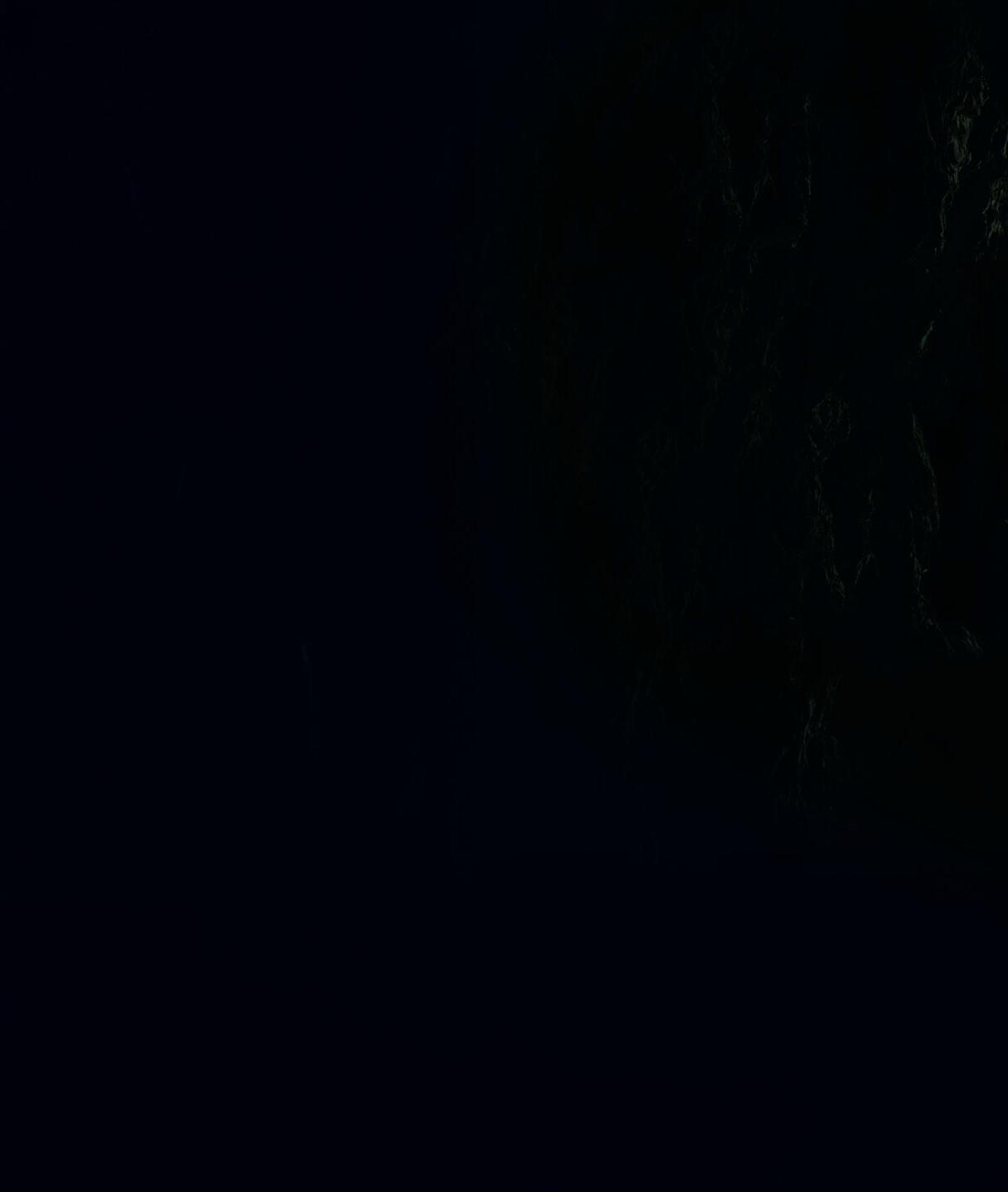
The rare tufted ground squirrel –which according to legend likes the
– has the fluffiest tail of all animals relative to its body size
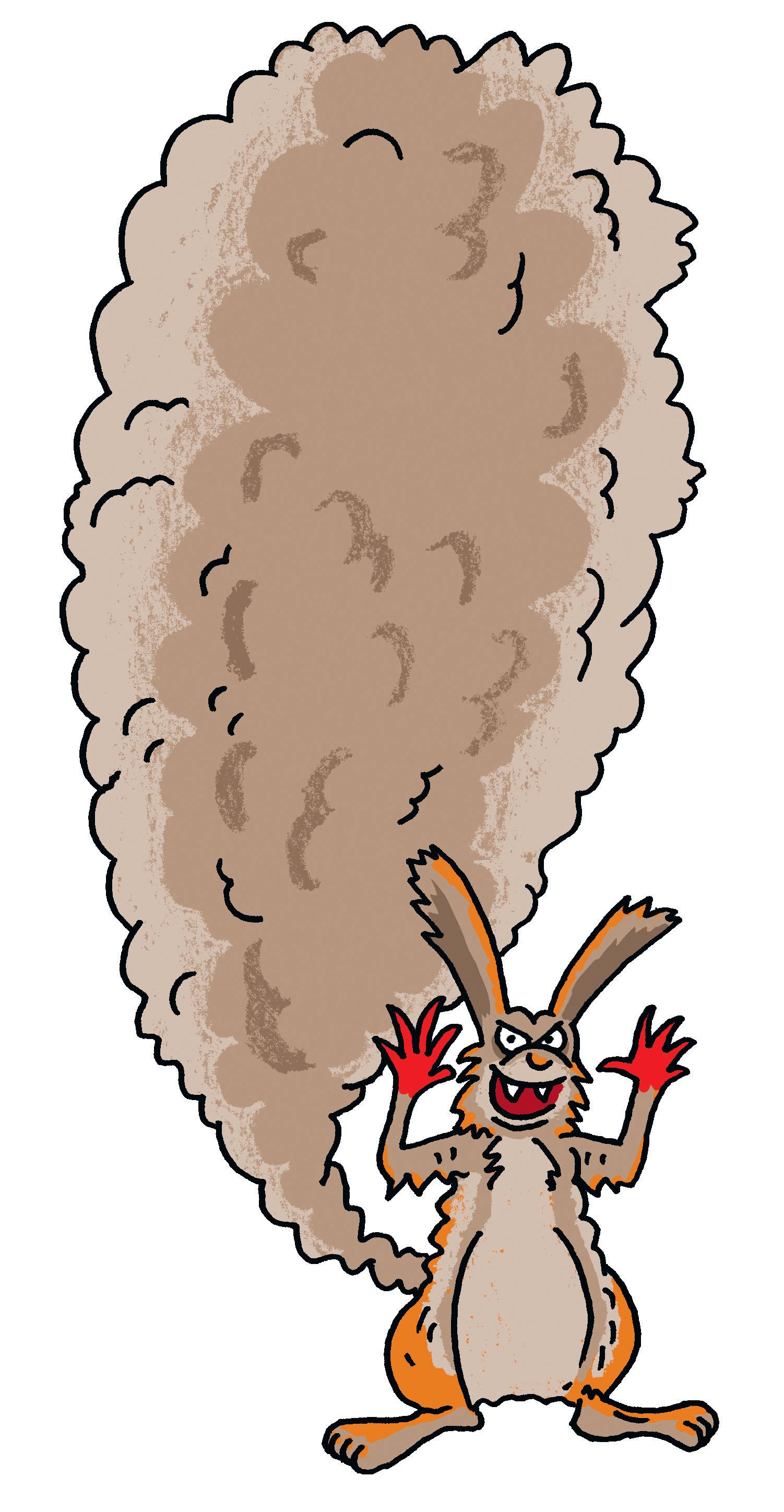

Lice feed on blood up to five times a day, and they usually prefer to dine on the same types of blood for their entire lives

The US president’s limo has a fridge stocked with the president’s blood type in case of an emergency

About 7,571 litres of blood are pumped through the average human heart as blood circulates around the body every day
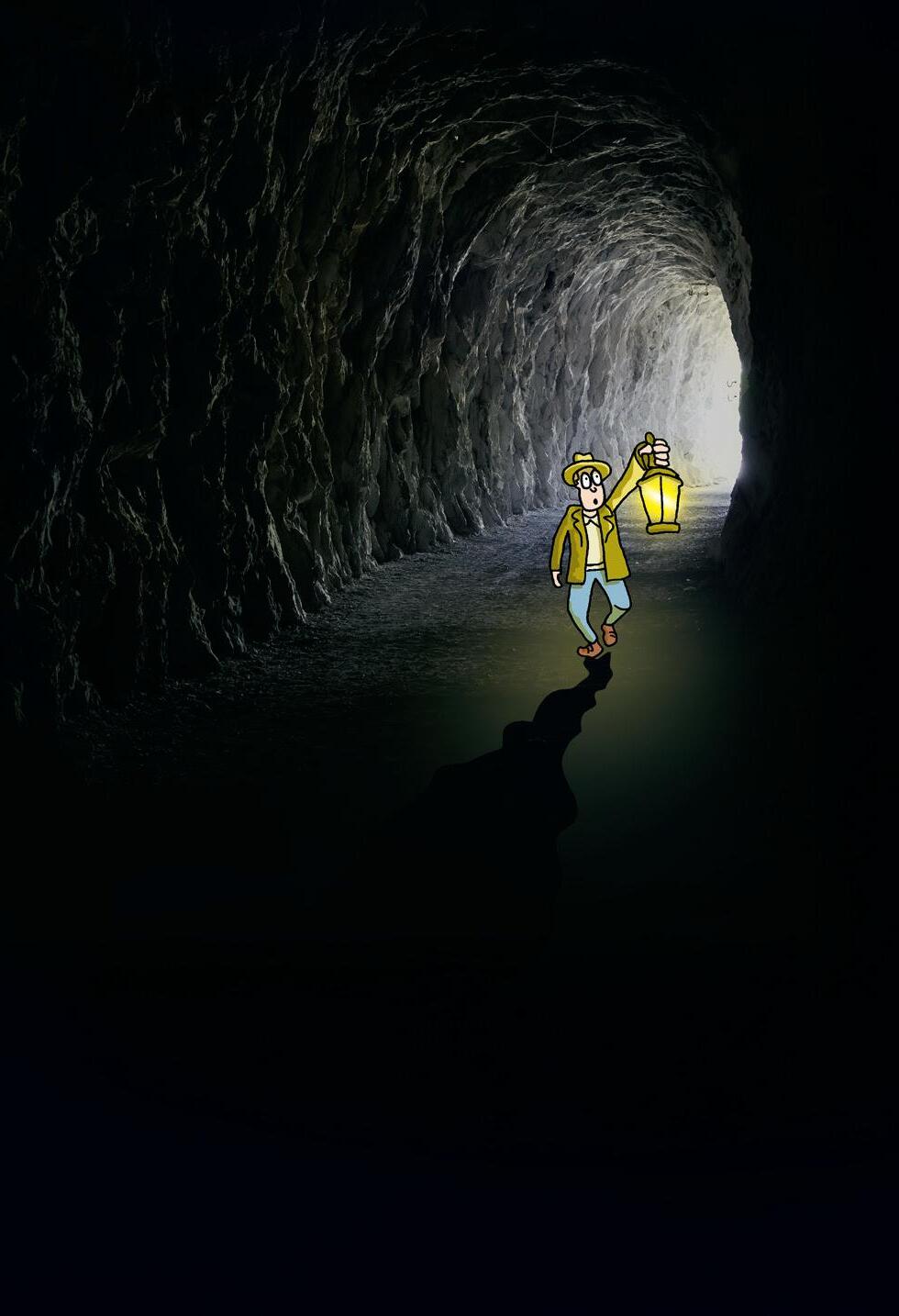

In the late 19th and early 20th centuries in South Africa, there were reported sightings of a – a mythical monster with the head of an elephant and the body of a huge serpent – believed to live inside a deep cave
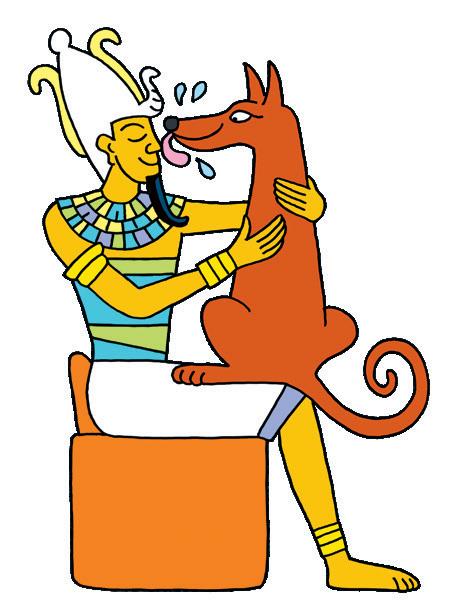

The world’s oldest known dog breed, the Saluki , was so revered in ancient Egypt that pharaohs kept these dogs as pets
Scientists are developing four-legged robots designed to explore hard-to-reach caves on Mars. They’re nicknamed ‘Mars Dogs’


In ancient Aztec and Maya cultures, people believed that the Xoloitzcuintli, a type of hairless dog, guarded the living and guided the dead to the underworld!

This Sumatran tiger was snapped in the forests of Indonesia. The number of tigers in the world has decreased dramatically over the last 100 years. This tiger is one of fewer than 400 left in the wild.


ENVIRONMENTAL PHOTOGRAPHY AWARD/BAMBANG WIRAWAN

Astonishing photos from around the world
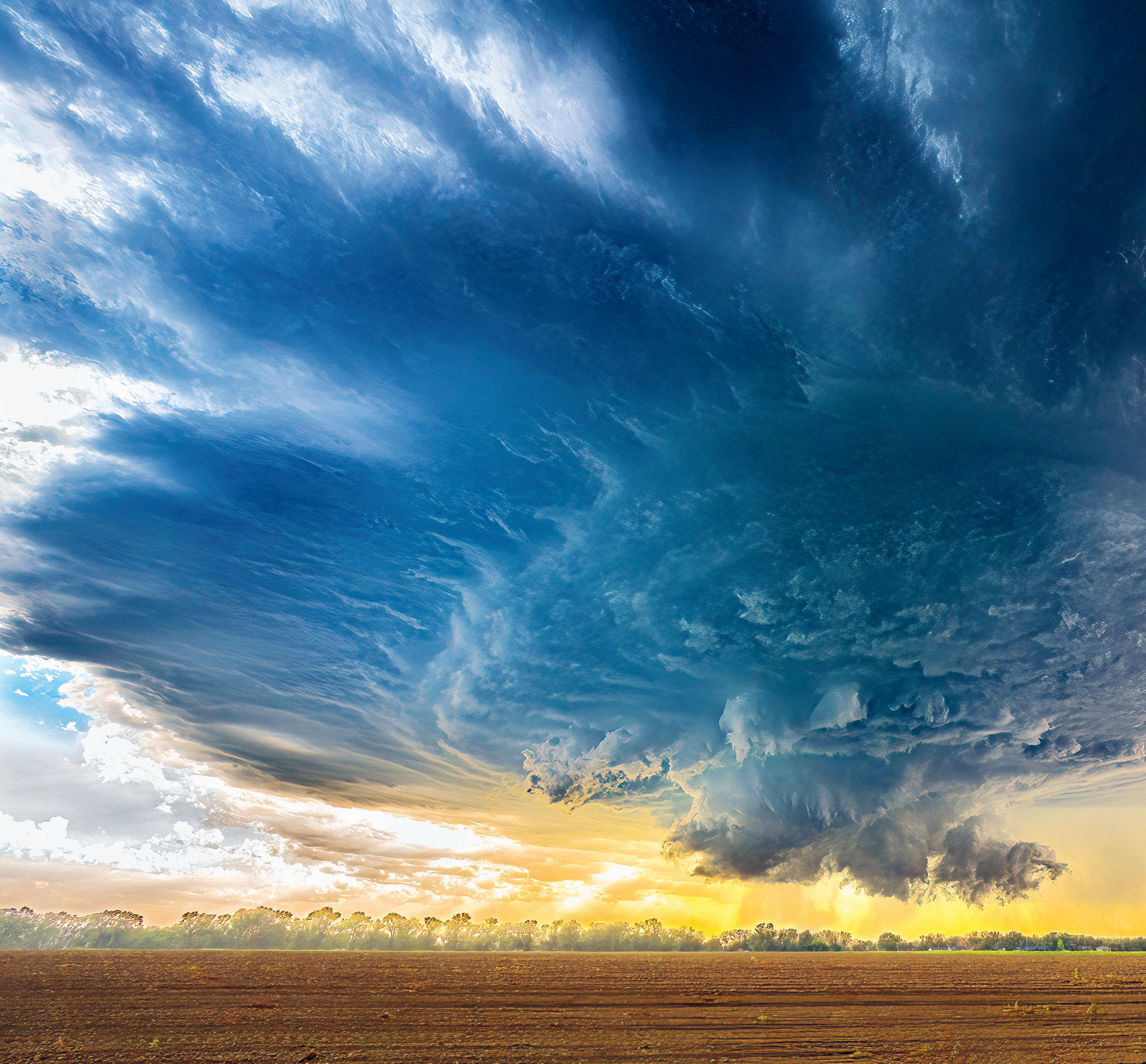


This fun baseball photo was snapped as Michael Harris II (left) of the Atlanta Braves reached second base for a double (a hit in which the batter strikes the ball and reaches second base without being called out by the umpire). Xavier Edwards of the Miami Marlins made an impressive dive in a valiant attempt to tag him out by any means necessary!

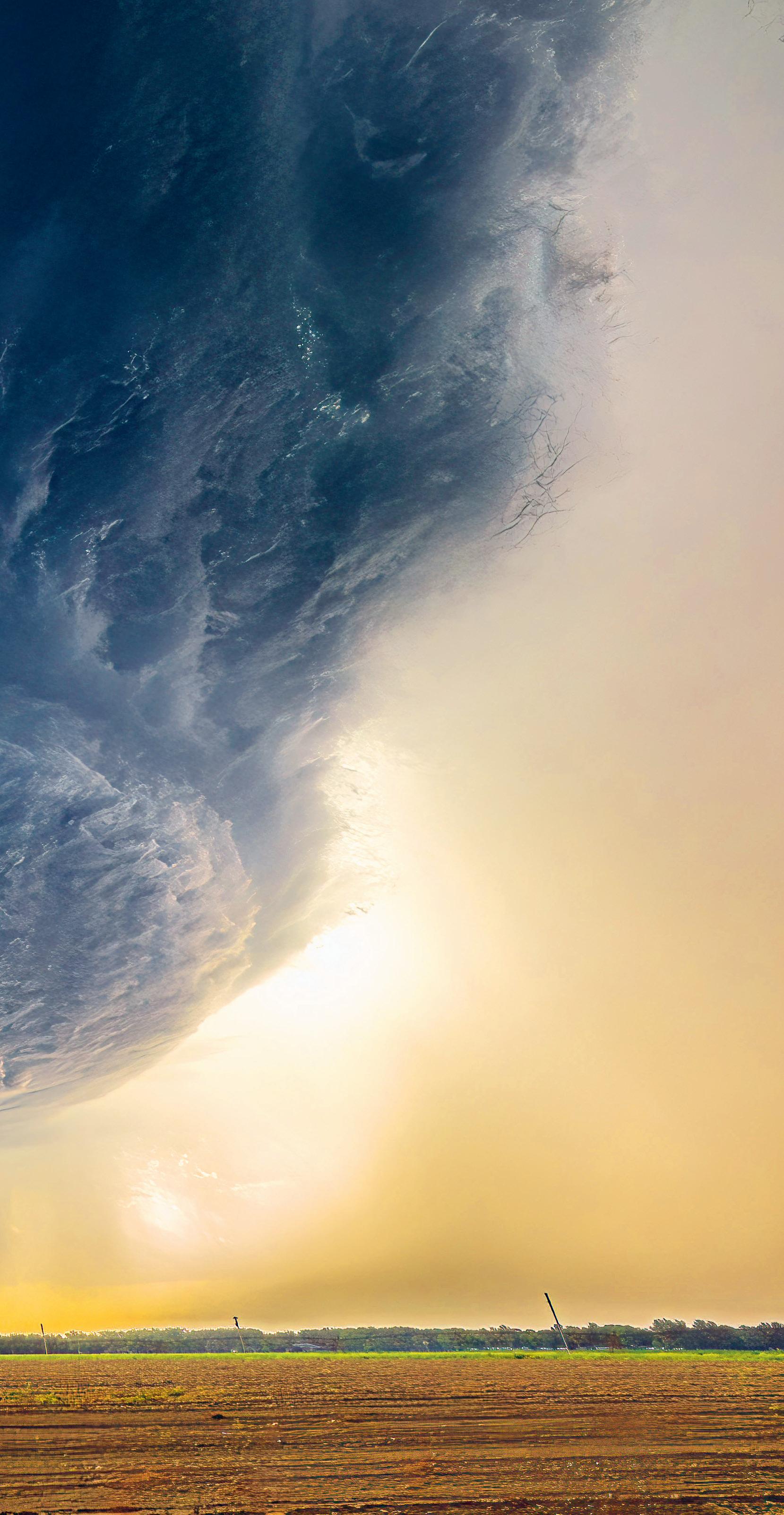



A storm cell is the smallest unit of a storm system. It contains a current of rising air and a current of falling air that form a loop. The storm cell moves in the sky as a single unit and sometimes looks like a dome or tower. Usually a thunderstorm has several cells. Sometimes a single cell appears like this in spectacular fashion!
IPA 2025/ILENE MEYERS

This potter wasp in India was captured mid-flight carrying a caterpillar to feed its larvae. Potter wasps sting their caterpillar prey to paralyse them.
WILDLIFE PHOTOGRAPHER OF THE YEAR/BIDYUT KALITA




Maraya Concert Hall in al-Ula, Saudi Arabia, seen in this amazing photo, holds the Guinness World Record for the largest mirrored building in the world. It was built in 2018 for the Winter at Tantora festival and is covered by 9,740 square metres of mirrors. And it is aptly named, too – the word maraya in Arabic means mirror.
IPA 2022/BEATRICE WONG


The latest astonishing discoveries, inventions and scientific breakthroughs.
Dozens of robot athletes recently competed in the first ever World Humanoid Robot Games in Beijing, China. Robots from 16 countries, including Germany, Japan and the United States, competed in events from football and athletics to dance and martial arts such as kickboxing. China is hoping to become a world leader in humanoid robots. The organisers of the event said that sports are a great way to test a robot’s skills such as decision-making and movement skills. Putting robots through athletic competitions allows robot scientists to study and refine how robots move so that they can work more effectively in homes and factories. It also gives them a chance to test how the robots’ controls work and make improvements.
Scan the QR code to watch some of the robots in action!


Scientists have discovered a new, strikingly armoured dinosaur in Morocco. The dinosaur, Spicomellusafer, lived about 165 million years ago. It is the oldest known ankylosaur, a group of armoured dinosaurs. Spicomellus is unique in that it had huge metrelong spikes jutting out from
both sides of its neck, as well as back spikes and an armoured tail. It was previously thought that ankylosaurs evolved over time from having simple to dangerous armour to protect themselves from predators such as T. rex This new find poses some questions for the experts.




SPICOMELLUS
The name Spicomellus comes from Latin and means ‘collar of spikes’ – fitting for this spiky-necked dinosaur!

Cockatoos are well known for their ability to shake a tail feather. Recently, scientists at a university in Australia have determined that these amazing birds have up to 30 different kinds of distinct dance moves. Their moves are performed with or without music and can even be combined into unique cockatoo choreography!
So far, scientists have only observed two types of animals dancing in time to music – parrots, including cockatoos, and primates like humans. It’s not known yet why we do it, but it is known that it’s a lot of fun!
BIRDY BOPS
Scan the QR code above for a video of some cockatoo dance moves in action. And if you feel inspired, you can get up and try them yourself!

Type of dinosaur: armoured dinosaur
Length: 4 metres
Diet: herbivorous
How it moved: on 4 legs When it lived: Mid Jurassic 167–163 million years ago

By Dr Nick Crumpton

Illustration by Adrienne Barman

Tasmanian devils are very territorial creatures that are only found in the wild on the Australian island of Tasmania. These feisty mammals will angrily defend their hunting patches from intruders. Their noises are usually growls, grumbles and shrieks, so get ready to be loud and fearless!

(Hey – we should hang out.)
Males make this huffing noise when approaching female devils.
YOU KNOW?
Tasmanian devils have the strongest bite relative to size of any mammal in the world!
(Get away from my nest!)

(Don’t mess with me.)
THIS MONTH: the strange and surprising origins of six famous expressions.
By Alison Eldridge, Illustrations by Susanna Hickling
Language is more than just sounds that become words and words that become sentences. One of the most difficult aspects of a language to master is its set phrases and sayings that sometimes seem nonsensical
This saying, thought to have originated in the 5th century, means to be grateful for a gift (even if it’s not exactly what you wanted) and to not take gifts for granted. It comes from a time when a horse’s value was determined based on its age. Like humans, horses have baby teeth and adult teeth and you can estimate a horse’s age by looking at its teeth. If you got a horse for free, it would be rude to immediately try to figure out how much money it was worth.
but have a straightforward meaning to native speakers. For example, has anyone ever asked you not to ‘spill the beans’ about a secret? What do beans have to do with secrets? Many English speakers
know the meaning of this phrase and use it all the time – but they might not know where it comes from. Here are the surprising origins of six everyday expressions in English that you might not know about.

This idiom means that someone is deliberately ignoring information that they don’t want to have to respond to. It is thought to come from a naval battle in the early 1800s.
British Vice Admiral Horatio Nelson, who was blind in one eye, is said to have held up his telescope to his blind eye in order to avoid seeing a signal telling him to stop the attack.



To steal someone’s thunder means to prevent someone else from getting attention or praise by doing or saying what that person was going to do or say before they can. You may be surprised to know that this saying comes from an actual incident, in which a
dramatist came up with a thunder machine for his play. His play was not successful, but another more successful production used the thunder machine method without his permission. His thunder was literally stolen!

This is a way of saying that someone is ill. It is unclear where the saying comes from and there are several theories, but most theories trace it to sailors. One popular theory is that sailors who weren’t feeling well went below decks, ‘under’ the ‘weather decks’ (the decks which are exposed to weather) of the ship.
A language can have many different types of sayings and unique phrases. Here are some of the most common: IDIOM: A group of words that have a meaning you can’t tell from the individual words themselves, such as ‘it’s raining cats and dogs’ or ‘you’re on thin ice’.
This term comes from a real practice of farmers. Farmers will leave real or fake eggs in hens’ nests to encourage them to lay more eggs there. Today, the term ‘nest egg’ now more often refers to financial savings put aside for the future.
To ‘spill the beans’ means to reveal a secret. This idiom probably comes from Ancient Greece, where votes were cast using black and white beans placed into a jar. If the jar was spilled, the results of the vote would be revealed!
APHORISM: A short statement of a general truth, such as ‘better to be safe than sorry’.
ADAGE: A type of aphorism that has been handed down from previous generations, such as ‘the clothes make the man’.
PROVERB: A type of aphorism that comes from folklore and often gives advice, such as ‘curiosity killed the cat’.




Echoes can tell a bat about the size, texture, distance and direction of its prey
Let’s take a deep dive into the world of animal senses to discover some of the amazing superpowers animals use each day to survive and thrive.
You probably know that animals – including us humans – use the senses of touch, sight, hearing, taste and smell to learn about the world around them. Animals that hunt for food use their senses to track and find their prey. Animals that are prey use their senses to spot nearby predators and to stay hidden. But did you know that many animals have senses beyond our own? Animals can see, hear, smell, taste and feel things that we can’t even imagine. Here are some fascinating examples of these animal super-senses, starting with super hearing through echolocation.
What is echolocation?
One of the most well-known and useful super-hearing powers is echolocation, which uses sound waves and their echoes to work out where things are in space without the need for natural light. Animals such as bats and dolphins use echolocation to sense objects around them, even in dark or murky environments.
How does it work?
If you’ve ever shouted in an empty room, you know that sounds bounce back as echoes. That’s because sound travels in waves. In echolocation, an animal sends out a sound, such as a call or click, then
waits for the echoes to return. The time, direction and strength of the echo tell the animal about nearby objects – how far away, how big and how fast they are moving. Some people with vision impairments have learned to use echolocation, by clicking the tongue or using a cane to create sound waves to sense nearby obstacles.
Why did it evolve?
Echolocation is especially useful when vision doesn’t help much – at night, underground or underwater. Over a thousand different species – from bats, whales and some shrews to cavedwelling birds such as oilbirds







A bat’s cochlea, part of the inner ear, is highly sensitive to a wide range of sound waves. It is finely tuned to detect returning echoes.
– have evolved this amazing ability. Animals that can’t see well, live in darkness, or are most active at night use echolocation to find food. They may also use it to help them navigate, when their vision is limited by darkness or muddy places.
The beluga whale has a special organ in its forehead called the melon, which it uses for echolocation. The melon is soft and squishy and changes shape as the beluga produces sounds.
The concave-eared torrent frog is able to communicate using ultrasonic sounds (outside human hearing range), helping its calls carry above the roar of noisy waterfalls and streams. The frog’s
STILL OBJECT
When sound hits an object, it reflects back towards the bat. The time it takes to come back tells the bat how far away something is.
MOVING AWAY
When an object is moving away from the bat, the returning sound has a lower pitch than the sound the bat sent out.
MOVING CLOSER
When an object is moving towards the bat, the returning sound is higher in pitch than the sound the bat sent out.
Beluga whales can produce up to 11 different sounds.
thin eardrums help it to hear high frequencies.
Bottlenose dolphins can hear extremely high pitches – up to about 150 kHz. For comparison, humans can only hear up to around 20 kHz!






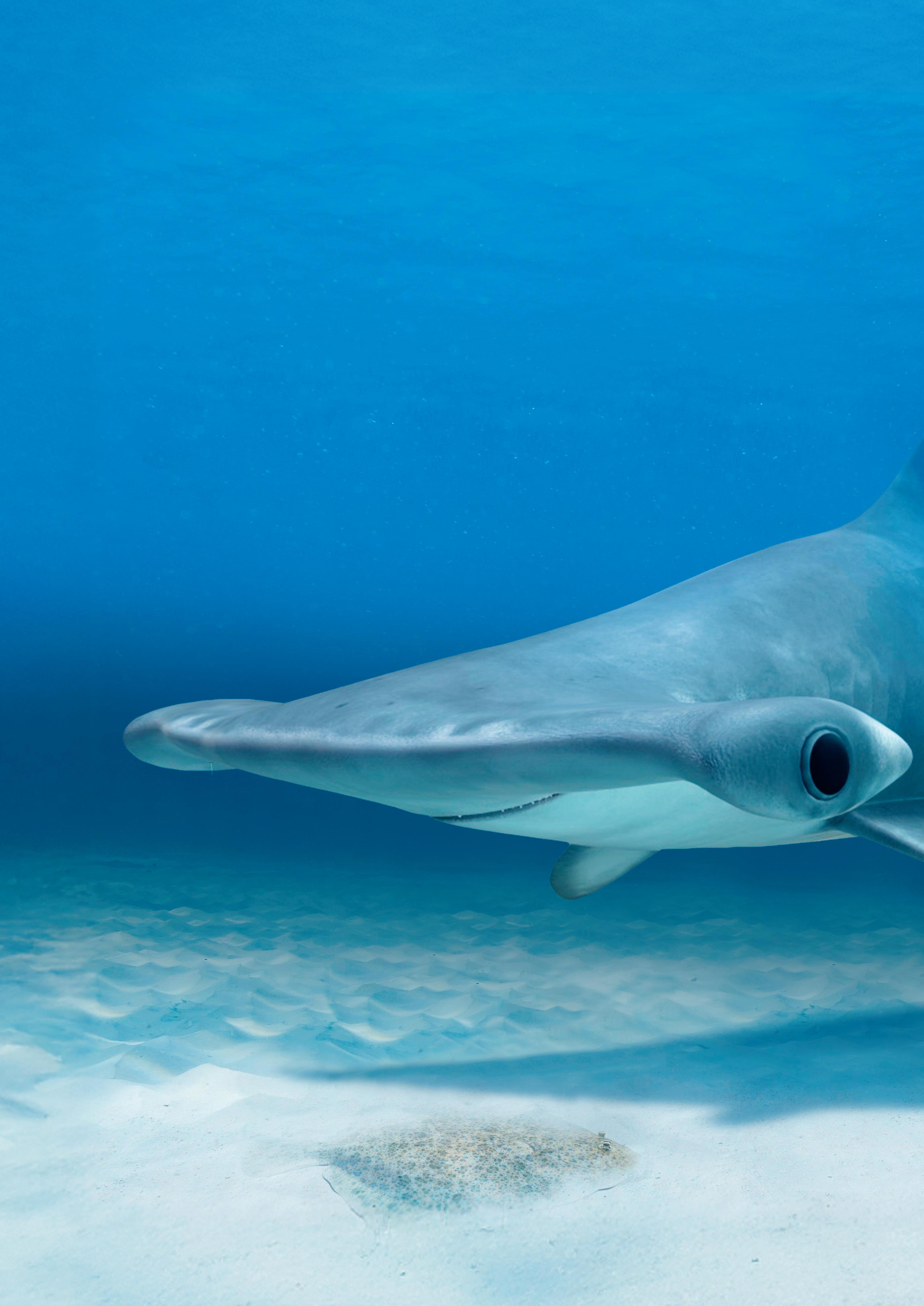



Electroreception is the sense that lets some animals detect electrical signals. They use these signals to find prey and work out where they are. Some animals use electroreception for communication. Like echolocation, electroreception can be a powerful tool for animals that have low or reduced vision or live in dark or muddy environments where it is difficult to see. Relying on this electrical sense – as bats rely on their hearing – helps these animals
go about their business of living and eating without having to rely on their sight.

How does electroreception work?
All animals – including you! – produce weak electrical fields from nerve and muscle activity. Some animals detect these fields naturally. This is called passive electroreception. Passive means sensing what’s already there, without making extra signals. Others send out their own electrical signals with special organs, then sense changes in that field. This is
Electroreceptors in this hammerhead shark’s elongated head allow it to detect electrical signals given off by prey, even in the dark.



Bees can detect the electrical fields given off by flowers.
called active electroreception, because the animal creates a signal first and then spots distortions around objects.

Most animals that use electroreception live in salt water, which is a much better conductor of electricity than fresh water or air. This makes weak electrical signals carry better and stand out against background noise. Electroreceptive animals include sharks, rays, bees, sturgeons, lampreys and platypuses.
A related ability to electroreception is magnetoreception, which is the
The electrical field given off by the prey fish is picked up by the shark’s electroreceptors, giving it information about where the fish is hiding!

sense of Earth’s magnetic field. Earth has a magnetic field because of the movement of molten iron in its core. No known animal needs to concern itself with Earth’s blisteringly hot core, but sensing our planet’s magnetic field is surprisingly useful. Animals such as birds and fish use this sense to help them navigate and build internal
maps of places. This is very helpful to animals that migrate long distances, especially those that return to the same places. In experiments, sea turtles have shown they can sense magnetic fields, and they may use them like an internal ‘GPS’ to navigate to their nesting sites each year. Although scientists know the organs and cells behind hearing, taste and smell, they’re still not sure how the magnetic sense works in the body. Some research suggests humans may have a hidden magnetic sense, too!

Octopuses have special cells not found in any other animal that allow them to taste anything their arm suckers touch. This means that an octopus can search around for food and figure out what’s tasty without having to think about it with its brain!
Dogs have about 220 million scent receptors, whereas humans have about 5 million. Dogs are also able to smell with each nostril

independently! Dogs are so good at smelling that they can be trained to sniff out diseases, including some forms of cancer, malaria and Parkinson’s disease.
helping humans detect danger. Some pouched rats have been trained to sniff out the disease tuberculosis as well as the explosives used in landmines. Pouched rats have found tens of thousands of landmines, allowing countries to destroy the dangerous mines and keep people safe.
Polar bears are capable of smelling their prey – usually seals – from more than 30 kilometres away. They can even smell a seal that is up to a kilometre away hidden beneath a metre of snow!
DID YOU KNOW?
Hammerhead sharks use specialised muscles to tilt their heads up and down.


The African giant pouched rat is another super-sniffer, capable of
Catfish have one of the best senses of taste of any animal, with more than 100,000 taste buds all over their bodies, including in their mouths, on their fins and in their whiskers.


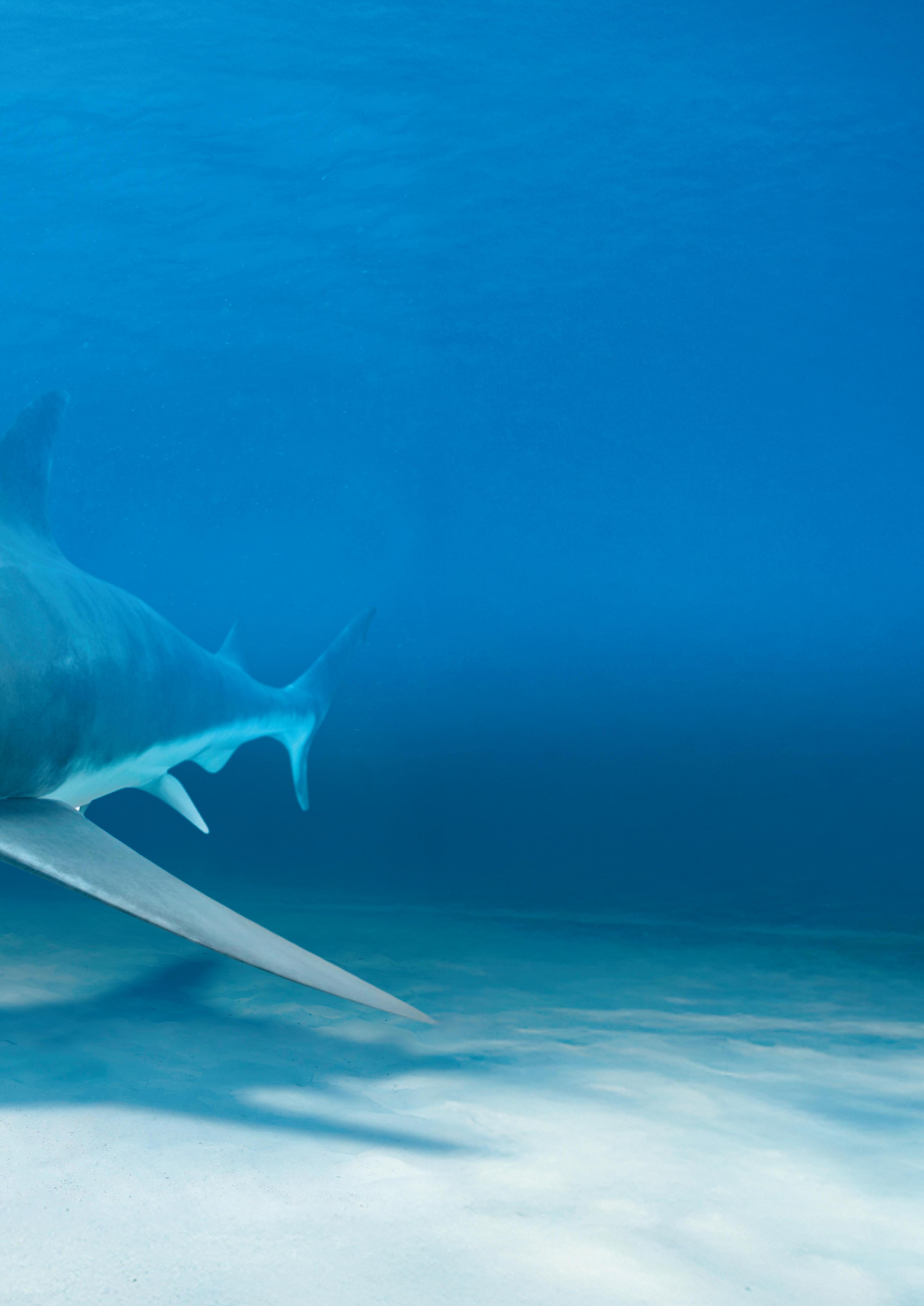












What is infrared sensing?

Infrared is a type of light that is outside the visible spectrum, which means we humans are unable to see it. Infrared waves feel like heat to us, but other animals, including certain snakes, sense them with specialised organs. We call this ‘heat vision’ or thermal vision. You may have seen an infrared picture, like the mouse shown below, which mimics what a snake detects. Warmer areas appear brighter than cooler areas, making prey easier to see against cooler surfaces.
How does a snake’s thermal vision work?
Snakes such as pit vipers have a special organ called a pit organ that enables this sense. In pit vipers, the pit organ is located between the eyes and nostrils, and in boas and pythons it can form heat-sensing pits along the lips or lie between scales.

Why did it evolve?



The pit organ has a sensory membrane packed with thousands of cells that respond to infrared radiation. These special cells send messages to the snake’s brain about the temperature of nearby objects. The snake’s brain combines heat signals with vision signals to build a single picture of its environment.
Thermal vision helps animals to hunt and navigate in low-light environments, using temperature contrasts when sight is limited, and detect predators and prey. Vampire bats, mosquitoes and some frogs use thermal vision, too!

Inside the snake’s brain, heat signals from the mouse and visual information combine to form a single image of what the mouse looks like.



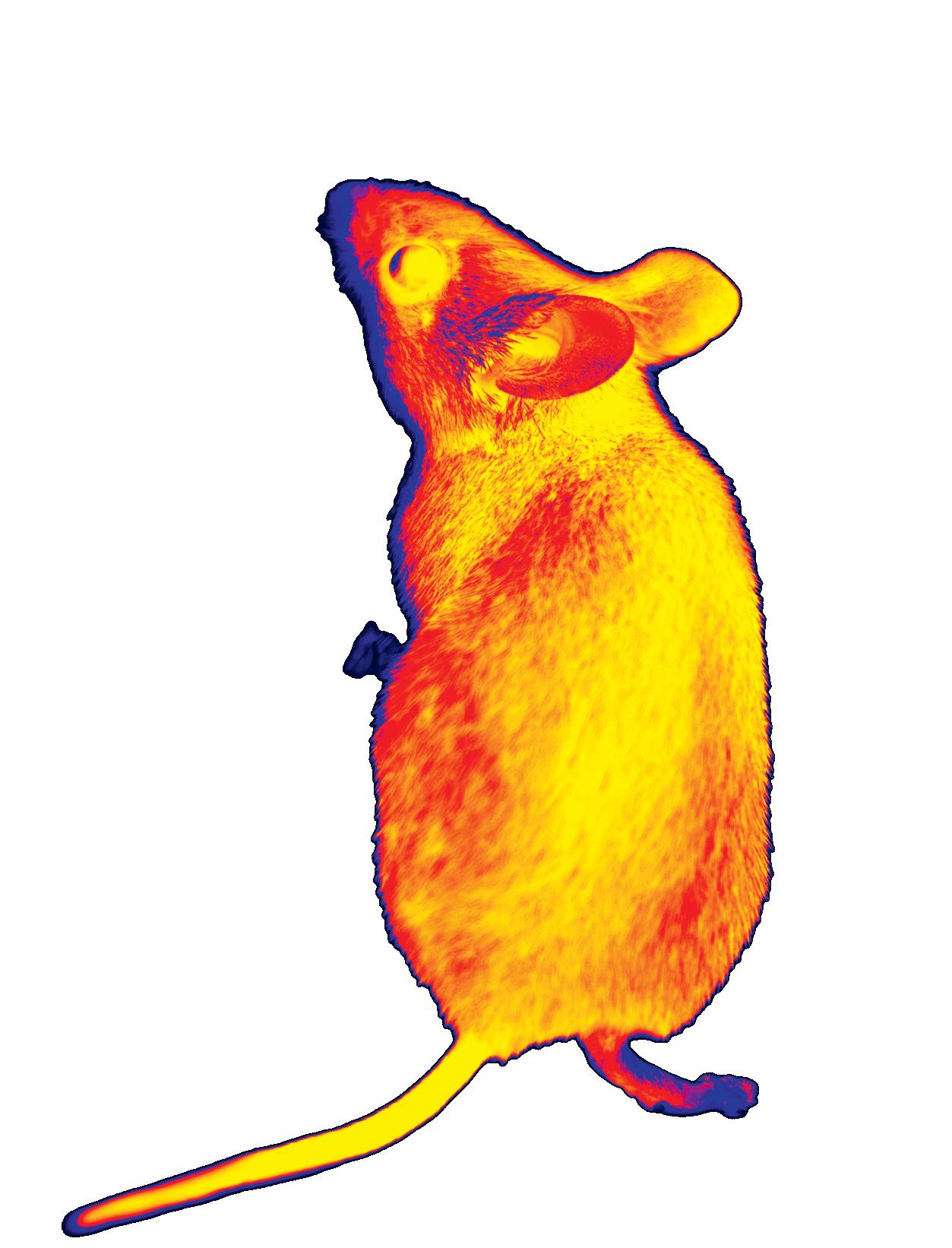



A special organ called the pit organ allows this snake to see its prey with both regular vision and heat vision.
Infrared energy is given off by any object warmer than absolute zero (-273.15 °C).





The phrase ‘eagle-eyed’ means to see very well, like an eagle. Eagles have some of the sharpest vision of any animal. It is estimated they can see 4 to 8 times better than the average human. An eagle can spot a scampering rabbit from up to 3 kilometres away!
The colourful mantis shrimp (pictured below) has 12 types of colour-sensing photoreceptors. Humans only
have three! This enables the mantis shrimp to detect types of light that we humans can’t.
Spiders have super-sensitive touch. Tiny slit sensors in their exoskeleton detect vibrations.

The back layers of a reindeer’s eyes change colour with the seasons. In summer they are golden but in winter they turn blue. The change to blue makes the eyes more than a thousand times more sensitive to light, helping reindeer see during the long, dark winter months.


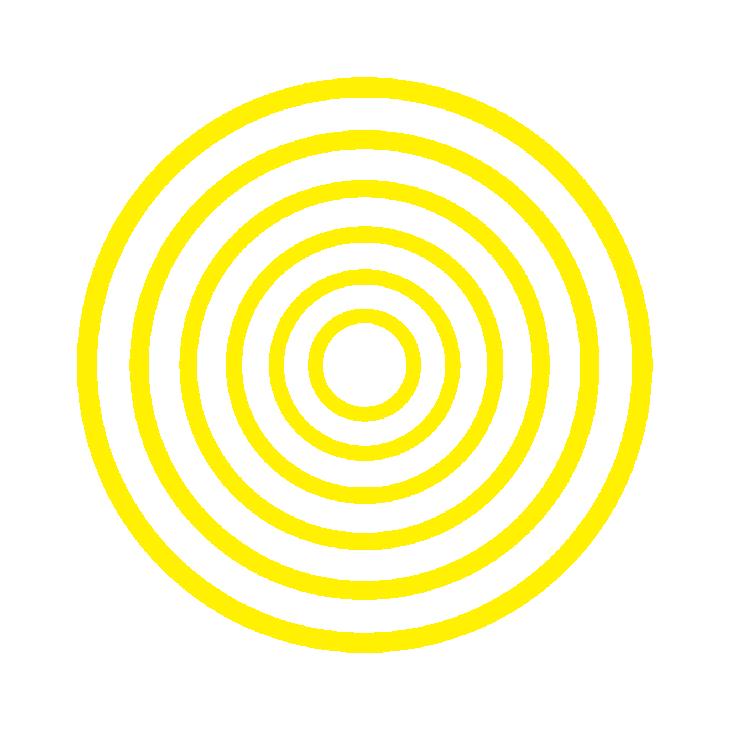



The star-nosed mole has 22 fleshy tentacles around its nose which are packed with 25,000 sensors. That’s five times the amount of touch sensors in the human hand! The star-nosed mole is widely considered the fastest eater of any mammal. It can identify prey as edible, capture the prey, and eat it in only about 230 milliseconds.


When a fly is caught in a spider’s web, it causes tiny vibrations that the spider can detect. The spider then scuttles along the web to seize its prey!




Elephants are able to sense vibrations from the ground, perhaps through special receptors in their feet. Their trunks are also highly sensitive to vibrations. This sense lets elephants communicate by sending vibrations through the ground.
Fish have a special organ system called the lateral line that allows them to sense water movement, pressure and vibration. Lateral lines help fish to navigate, avoid danger and form schools.

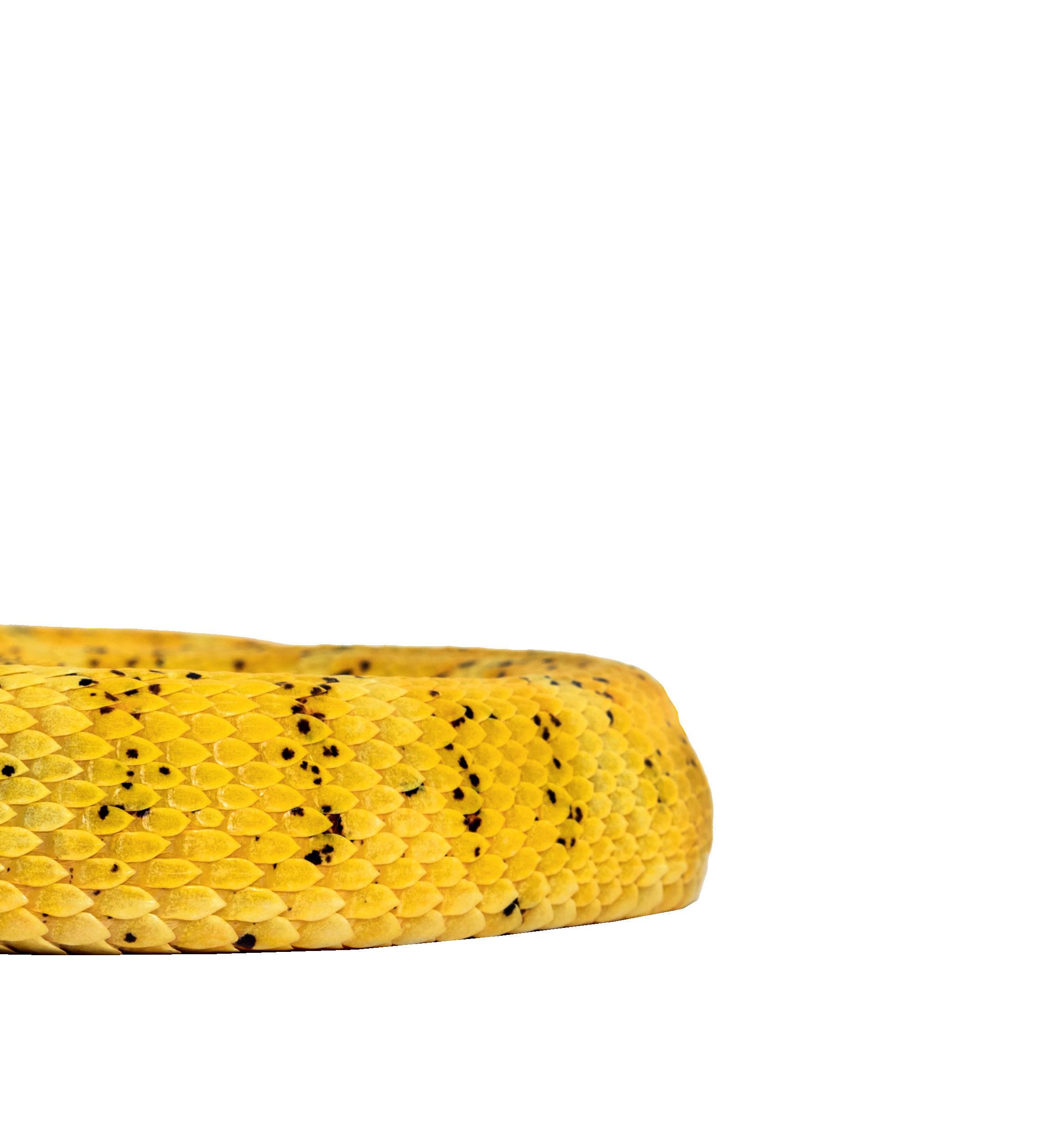
There are two age categories. The Junior category is for pupils aged 8 to 11, and the Senior category is for pupils aged 11 to 14. Each team must have four contestants, and schools can enter up to two teams in each age category. Children who are home educated can also form teams of four to take part.
The online heats take place on the 5th and 6th November with general knowledge rounds inspired by recent issues of What on Earth! Magazine. Hosted by our very own quizmaster, the online heats will include timed questions, a countdown clock – and plenty of fun along the way!

The top four schools in each age category will earn a place in the thrilling Grand Final at Stationers’ Hall in London on Wednesday 26th November. Friends and family can come along to cheer for their teams! Finalists will compete for trophies, medals, prizes – and the title of What on Earth! National Schools Quiz Champions 2025.

HOW TO ENTER
It’s simple to do. Just show this page to a teacher or grown-up and ask them to visit: whatonearthmag.com/quiz. Good luck – we can’t wait to see you peforming on your buzzer!

Inside this 12-page activity section, you will find quizzes to do, puzzles to solve and fun activities to try. And don’t worry if you get stuck – all the answers are on page 34.

1 Approximately what percentage of all the animal species found on Earth are beetles?
a. o.25%
b. 2.5%
c. 12.5%
d. 25%
2 Which type of bird lays the world’s largest eggs?
a. Eagle
b. Ostrich
c. Pelican
d. Swan
3 Snow monkeys are native to (live naturally in) which of the following four countries?
a. Japan
b. India
c. China
c. Vietnam
4 Which of these animals is NOT a marsupial?
a. Opossum
b. Wombat
c. Capybara
Tasmanian devil
Add a single letter in the gap between the groups of letters below so that the new letter completes a word before the gap and starts a word after it. For example, in the sequence PLU_OOD, the missing letter is G.
Adding the G creates two words: PLUG and GOOD. Now see if you can add the missing letter to the sequences below!

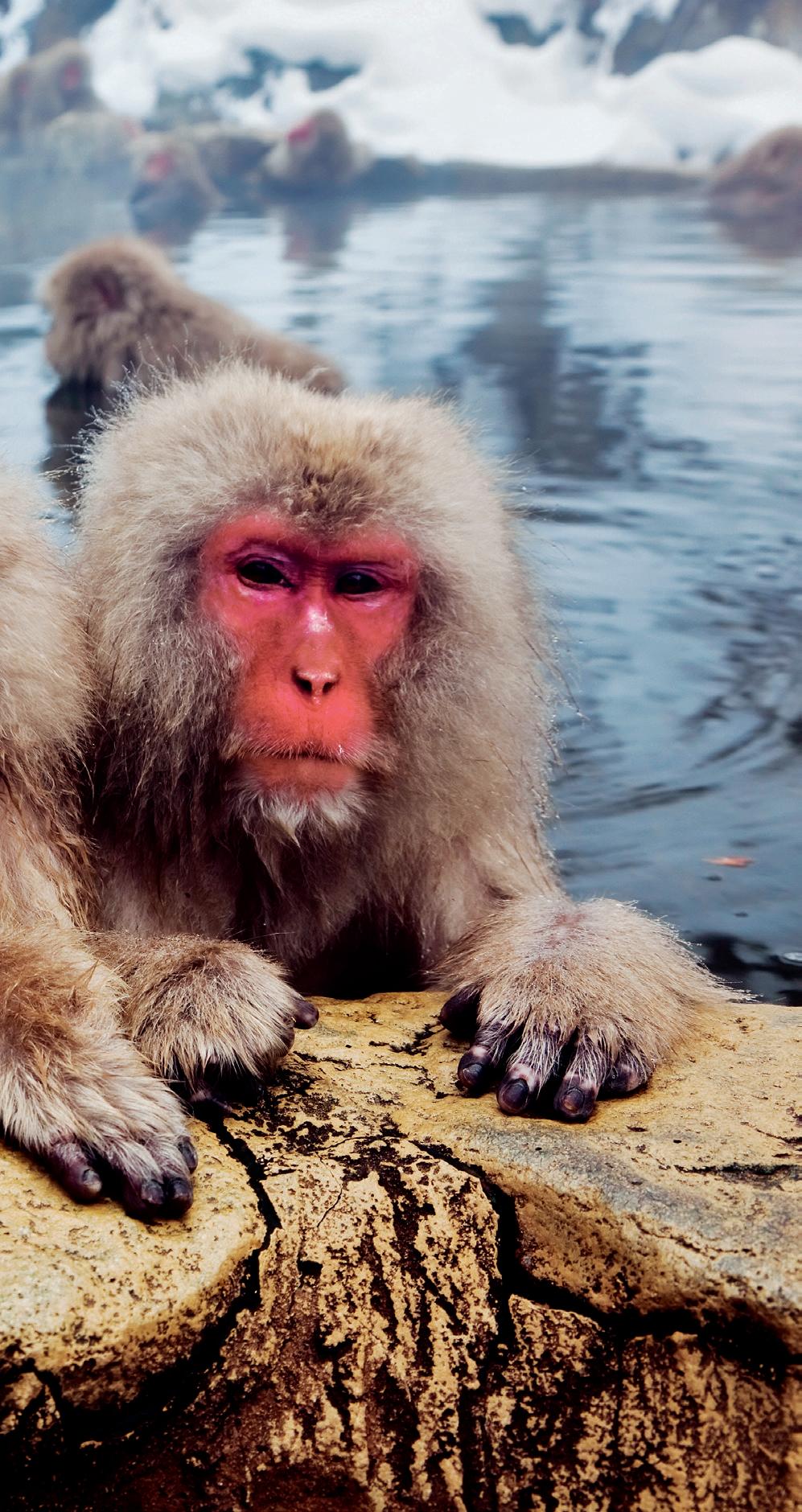
Look closely at the four leaves below. Three of them have exactly the same pattern, but one is different. Study each leaf carefully, compare their patterns, and see if you can spot which leaf is the odd one out!
Can you find your way through our maze of square rooms? Enter through the door marked with the red arrow, then try to find your way to the exit by going through the correct sequence of open doors. Good luck!

1 Which city is sometimes referred to as the Gateway to India?
a. Mumbai
b. New Delhi
c. Bangalore
d. Kolkata
2 Which of these four European countries is entirely surrounded by Italy?
a. Monaco
b. Andorra
c. San Marino
d. Liechtenstein
3 Which is the smallest of the world’s oceans?
a. Indian Ocean
b. Atlantic Ocean
c. Southern Ocean
d. Arctic Ocean
4 Which country’s national flag is shown on the right?
a. Greece
b. Greenland
c. Germany
d. Georgia
4
Each of these pictures represents a common word or expression. Can you work out what each visual clue is trying to say?
Clue: a common shape that has four straight sides and four right angles (9 letters).
Answer:
Clue: graceful and stylish in appearance or manner (7 letters).
Answer:
Clue: a sugary fluid produced by flowers that bees use to make honey (6 letters).
Answer:
Clue: a sleep-like state that people can fall into when they have been hypnotised (6 letters).
Answer:
Use the word wheel to help find the answers to the eight clues below. All the answers contain the middle letter, and each letter can only be used once. Good luck! R C N G E L T A E
Clue: a heavenly being that in Christianity is often sent by God as a messenger (5 letters).
Answer:
Clue: the colour between blue and yellow in the spectrum (5 letters).
Answer:
Clue: a large bird of prey known for its impressive powers of sight (5 letters).
Answer:
Clue: there are more than 3 trillion of these living organisms on planet Earth (4 letters).
Answer:
Each of the four emoji sequences below represents a common phrase. Can you work out which phrase it is in each example?
Fill all the empty squares so that every row, column and 3x2 box contains each of the numbers 1 to 6.

Can you work out what you are looking at in each of these six photos?

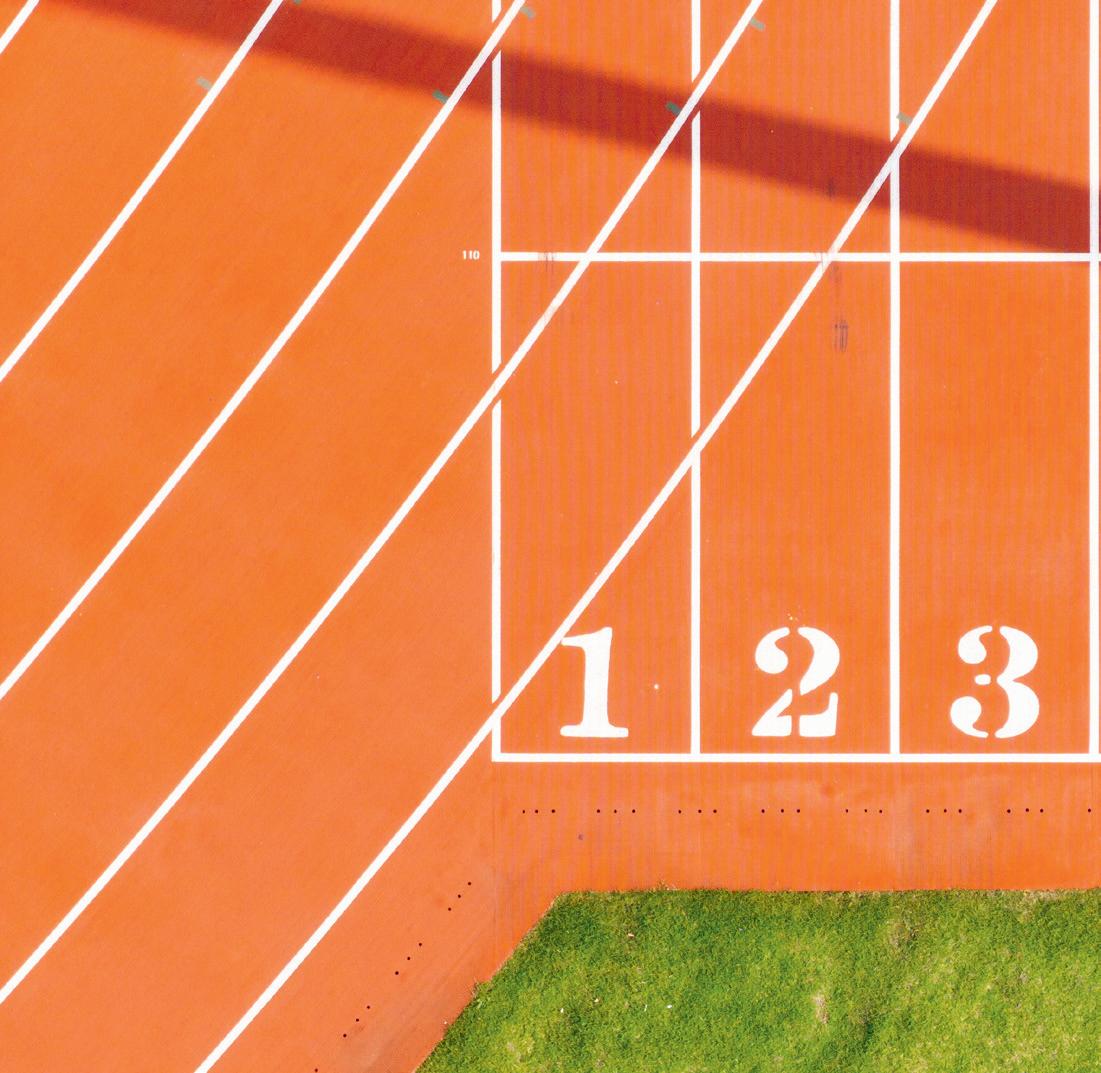



In the triangles below, the numbers inside the red circles are the sum of the two numbers in the connected white hexagons. For example: Can you work out which number should appear in each of the hexagons? All the numbers in the hexagons are between 1 and 10 and a number can only be used once in each of the triangles.

The six-sided shape on the top can be folded up to form a cube. Only two of the cubes below can be made by it. Which are they?

1
How many sunrises and sunsets do astronauts on the International Space Station see each day?
a. 1
b. 6
c. 10
d. 16
2 What is the hottest planet in our solar system?
a. Mercury
b. Venus
c. Mars
d. Jupiter
3 How does water behave when it is exposed to space?
a. It boils
b. It freezes
c. It boils and then it freezes
d. It disappears
4 What were the first animals intentionally sent into space?
a. Dogs
b. Rabbits
c. Monkeys
d. Fruit flies
Draw a line to connect each pair of dots. You can’t use diagonal lines and the lines can’t cross or touch each other. You must fill the whole grid with lines but only one line is allowed in each square.


1
The face of which of the following four US presidents is NOT carved into the side of Mount Rushmore in South Dakota, USA (pictured above)?
a. Abraham Lincoln
b. Donald Trump
c. George Washington
d. Thomas Jefferson
2 What’s the top score in tenpin bowling?
a. 100
b. 200
c. 300 d. 400
3 Which sweets ‘melt in your mouth but not in your hand’?
a. M&Ms
b. Skittles
c. Gummy bears d. Jelly beans
4 How many strings does a standard guitar have?
a. 4 b. 5 c. 6 d. 7

Fill in the missing numbers so that every row and column includes the numbers 1, 2, 3 and 4. Use the inequality signs as clues and make sure numbers always obey the inequality sign between them. This means that the arrows between the numbers always point towards the smaller number. Here is an example:
In the three squares shown above, the number A must be less than 3 and greater than the missing number B. We know all the numbers must be between 1 and 4, so therefore A must be 2 and B must be 1.
Can you spot the 20 spooky words hidden in our giant word search puzzle? Good luck!
POTION
PUMPKIN SCREAM
SKELETON
SPIDER
SPOOKY
VAMPIRE
ZOMBIE
1 How many colours can the human eye distinguish (tell the difference) between?
2 What is the most common blood type?
3 Ar0und
4 Why does your stomach sometimes make a rumbling sound when you are feeling hungry?

a. Your stomach is shrinking to save energy
b. Air and fluid is moving through your digestive system
c. Your stomach is sending hunger signals
d. Your blood sugars are dropping
Can you spot all 2O differences between these two monstrous mansions?
Emoji Idioms
A. Crocodile tears
B. The bee’s knees
C. Smart cookie
D. Time flies

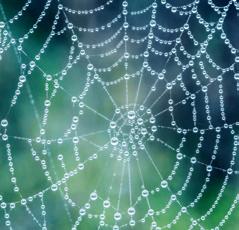

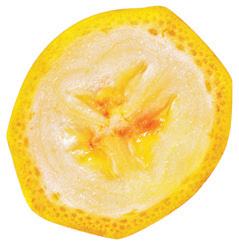
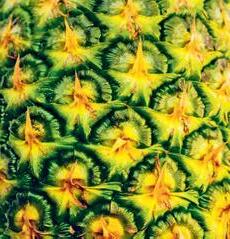

If you look closely at the four shapes above, you will probably feel your brain start to bend. How many pink rectangular blocks do you see? Which sides of the two triangular shapes seem closest to you? And how on Earth does the orange cube fit together?
These ‘impossible’ shapes trick your brain by following some rules of 3-D drawing but breaking others. Although the drawings are two-dimensional, your brain interprets them
as representations of three-dimensional objects. But, at the same time, your brain knows that three-dimensional objects like these couldn’t possibly exist. It can cause quite a headache! Impossible shapes fascinate mathematicians and artists. Artists even build sculptures that seem impossible using tricks of perspective. Seen from most angles, these sculptures look like broken lines, but line them up just right and the ‘impossible’ shape appears!
Half of the Moon is always lit up by the Sun (except during a lunar eclipse). But as the Moon orbits Earth, which takes about 27 days, we see different amounts of sunlight reflected by the Moon. Learn about the Moon’s phases from Britannica’s Encyclopedia Infographica!

If you look carefully at the surface of the Moon, perhaps through a telescope, you will notice that the same side of the Moon, called the ‘near side’, is always facing Earth. The other side of the Moon, called the ‘far side’, can never be seen from Earth. This is because the Moon rotates on

its axis at the same rate that it orbits Earth. So, as the Moon moves around Earth, its far side is always rotating away from us, which keeps it out of sight. However, space rockets and probes have been able to take photographs of the far side of the Moon, so we now know what it looks like.
Tides are the regular rise and fall of water levels in oceans, seas and lakes. The Moon is the major cause of the tides (the Sun plays a role, too). Like a magnet, the Moon pulls all of Earth’s water towards it. The Moon’s gravity causes a bulge in the oceans on the side of Earth closest to it. We call this bulge a high tide. The fact
that Earth is continuously rotating causes a second high tide to occur on the opposite side of Earth to the Moon. These two high tides draw water away from the rest of the oceans, which creates two low tides in between.


Wolves howl more at night but not specifically at a full Moon.
HOWLING WOLVES
One of the most common myths about the Moon is that wolves howl at it at night. Wolves do howl more frequently at night, when they are most active, but not because of the Moon. When wolves lift their heads up to howl, they are positioning themselves to project their howls as far as possible. This behaviour helps wolves communicate with other members of their pack across long distances.
FLYING THE FLAG
The Moon formed around 4.5 billion years ago, after a planet called Theia collided with Earth!

The American flags planted on the Moon by astronauts between 1969 and 1972 were specially designed for the task. Since the Moon has no atmosphere, there is no wind to make flags flutter. NASA engineers solved this problem by adding a rigid horizontal rod along the top edge of each flag, keeping it extended and creating the familiar flag shape.
DRIFTING AWAY
LUNAR ANIMALS
While wolves may not be affected by lunar cycles, the behaviour of many other animals is definitely influenced by the Moon. Fiddler crabs (right) time their mating rituals to coincide with the Moon’s phases. Sea turtles rely on moonlight to navigate to their nesting beaches. And certain coral species spawn only during full moons.

The Moon is drifting away from Earth at a rate of about 3.8 cm a year. However, the process is so gradual it will take billions of years to significantly affect Earth’s tides or the length of our days.
MOON ORIGINS
Scientists believe that the Moon formed after a catastrophic collision between Earth and a Mars-sized planet called Theia. This enormous impact vaporised portions of both, sending molten rock and debris into space around Earth. Over millions of years, this material cooled and clumped together to form the Moon!

When one space object, such as a planet or a moon, moves into the shadow of another space object, it is called an eclipse. There are two types of eclipse commonly seen from Earth: a solar eclipse and a lunar eclipse. Read on to discover when and how they occur.
A solar eclipse occurs when the Moon blocks light from the Sun from reaching Earth, casting a shadow on part of the Earth.
When the Sun, Moon and Earth line up exactly, it causes a total solar eclipse in which the Moon completely covers the Sun, blocking out its light. This perfect alignment of the Sun and Moon in the sky,
which astronomers call a totality, is possible only because of an astonishing coincidence, which is that the Sun is both 400 times bigger than the Moon and 400 times further away. This unlikely
combination means that the Moon covers the Sun perfectly in the sky. Only people in the umbra (see above) can see the totality. The visual phases of a total solar eclipse are shown in the diagram below.

A lunar eclipse occurs when Earth comes between the Sun and the Moon, blocking out the Sun’s light and casting its shadow on the Moon.

You must wear special protective glasses to look at an eclipse.
The area in partial shadow, called the penumbra, is much bigger than the umbra. People standing in the penumbra will see a partial solar eclipse.
The complete shadow cast by the Moon, called the umbra, is quite small where it hits Earth. People standing in the umbra will see a total solar eclipse.

Two times a year, on average 1 h 45 min
VISIBLE FROM LASTS FOR OCCURRENCE
Two to five times a year 7 min 32 sec
SEVEN WONDERS OF THE WORLD
People talk about the ‘Seven Wonders’ but don’t always know what they are. This famous list dates back to the 1st or 2nd century BCE, when the ‘Seven Wonders’ were used as a kind of early travel guide for Greek sightseers. Seven were chosen because the Greeks believed the number seven represented perfection. The only one still standing today is the Great Pyramid.
MADE About 430 BCE
This huge statue of Zeus, the leader of the Greek gods, was said to be a towering 12 metres tall. It was carved by Phidias, the greatest Athenian sculptor of his day. The statue was initially placed in a temple at Olympia, the site of the ancient Olympic games. It was later moved 1,000 km away to the city of Constantinople (now Istanbul, in Turkey), where it is thought to have been destroyed by a fire in around 476 CE.
LOCATOR MAP
All of the seven wonders were located within a reasonable travelling distance from Greece.
4 3 2 1
MEDITERRANEAN SEA
MADE About 280 BCE
This gigantic lighthouse was for centuries one of the tallest human-made structures in the world. The flaming beacon at its top (electric light bulbs were not available to use back then, unfortunately) was so bright it could be seen 56 kilometres out to sea. The lighthouse was damaged and then destroyed by earthquakes by about 1300. Since then, original pieces of the lighthouse have been found at the bottom of the River Nile.
2THE TEMPLE OF ARTEMISATEPHESUS, MODERN-DAY TURKEY
MADE 550 BCE
Awealthykingpaidforthe constructionofthisimpressive temple.Ittookmorethan120 yearstobuildbutjustoneday to ruin. In 356 BCE, a man called Herostratus set fire to the templewithoneaim:becoming famous. So that Herostratus wouldn’tgethisway,the Ephesiansdeclaredthathis name should never be written downorremembered.(Toany Ephesiansreadingthis,sorry!)
3 THE MAUSOLEUM MODERN-DAYHALICARNASSUS,AT
MADE About 353 BCE
A 41-metre-tall structure, this spectaculartombwasbuiltentirelyinwhitemarblefor Mausolus, the ruler of Caria, byhiswifeArtemisiaII.Itwas laterdestroyedbyaseriesof earthquakes,butMausolus’s name lives on in the word ‘mausoleum’, which is now used todescribeanyimpressive –buildingthathousesatomb sevenincludingoneofthe‘newwonders’,theTajMahal.
4 THE COLOSSUS OF RHODES, GREECE
MADE About 294–282 BCE
This towering 33-metre-tall bronze statue of the Greek god of the sun, Helios, stood at the entrance of the harbour of the city of Rhodes. It later became the main inspiration for the Statue of Liberty in New York City, which is sometimes called the ‘modern Colossus’.
6 THE GREAT PYRAMID OF GIZA, EGYPT
MADE About 2560–2540 BCE
Built as a mausoleum, or tomb, for the Egyptian pharaoh Khufu, the Great Pyramid was the tallest human-made structure on Earth for more than 4,000 years. It is thought to weigh 5.9 million tonnes and is the only one of the Seven Wonders of the Ancient World that still exists today. Two other pyramids and the Great Sphinx of Giza were built nearby.
7 THE HANGING GARDENS OF BABYLON, MODERN-DAY IRAQ
MADE 605–562 BCE
Most historians think that although they sound wonderful, the Hanging Gardens of Babylon were a popular myth. These beautiful gardens were supposedly built by Babylonian ruler Nebuchadnezzar II for his wife, Amytis of Media. Several ancient sources claim that the gardens were destroyed by an earthquake in the 1st century CE, but archaeologists have so far found no evidence of this.
JUST HOW BIG?
A red human figure 1.75 metres tall has been used as a scale comparison. Some of the figures are hard to see!
Just like people, fish need to take in a gas called oxygen in order to live. We get oxygen from the air we breathe, but fish get oxygen from the water. They breathe by using special body parts called gills. Gills need water in order to stay open. Without water, the gills will collapse and the fish can’t survive.
Special fish called lungfish have both gills and lungs and can breathe in and out of water. These creatures can survive for five years on land!
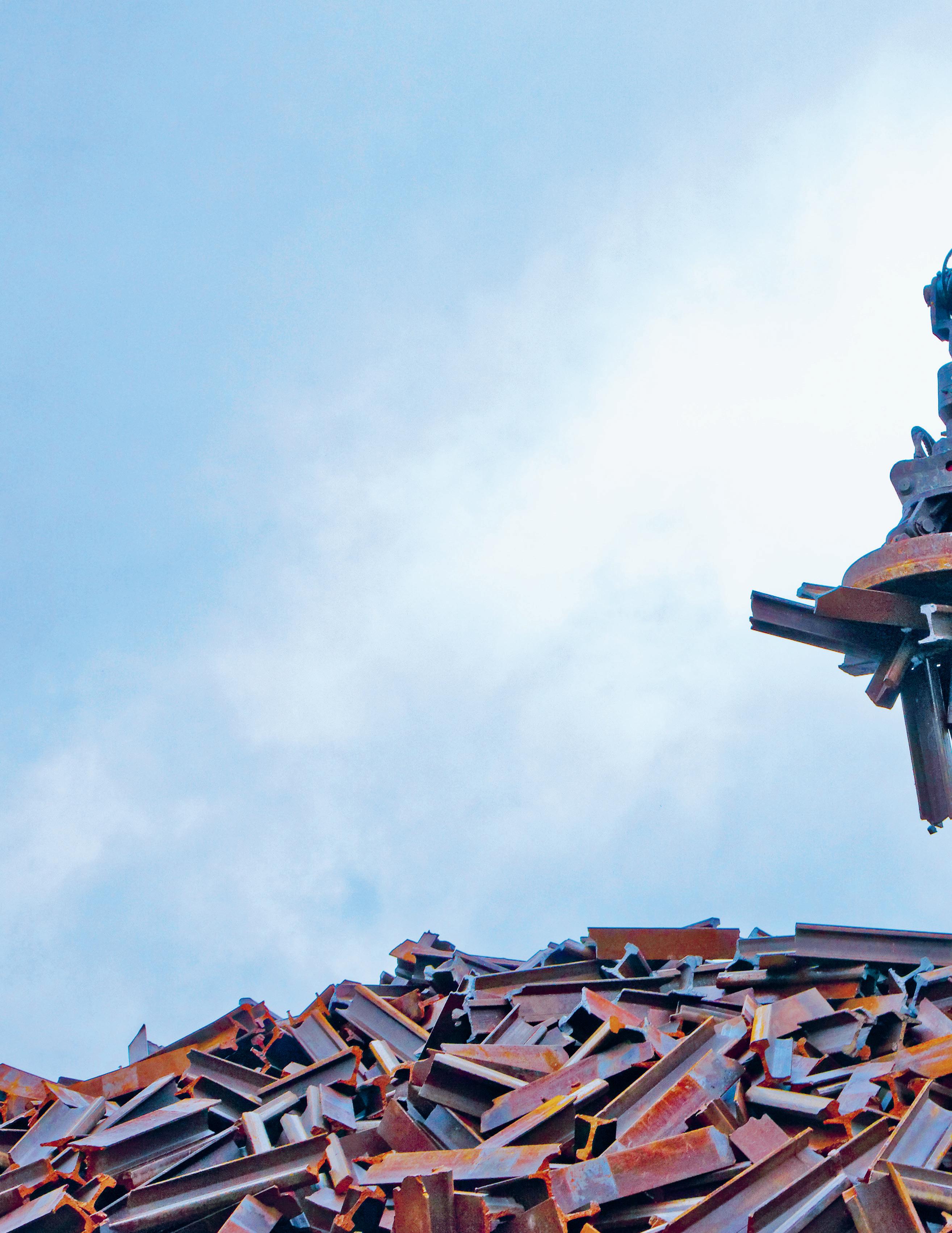
All magnets have two ends called a north pole and a south pole – even the magnets you’ve seen stuck to a fridge. In between these poles is an invisible force called magnetism. Magnetism either pulls an object towards the magnet so they stick together, or pushes the object away. A magnet will only stick to other magnetic materials, such as the metals iron and steel. It won’t stick to metals such as silver or gold, or to other materials such as paper or plastic, because they are not magnetic.
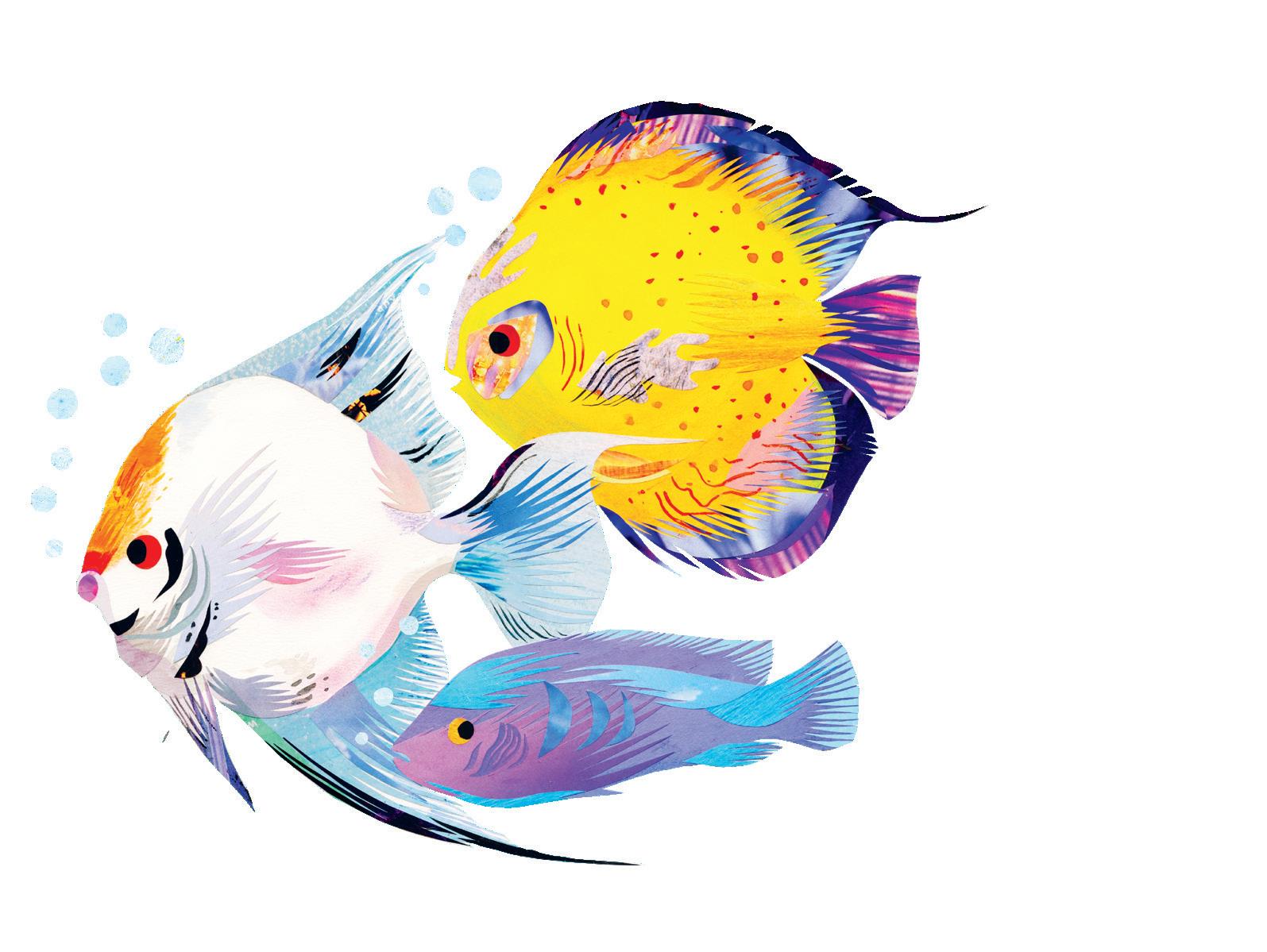


Water goes into a fish’s mouth and comes out of its gills. As the water goes through the gills,
Giant magnets are used to pick up and organise scrap metal.


The area around a magnet where magnetism works is called the magnetic field.
Magnetic field lines

If you put the north pole of one magnet near the south pole of another magnet or magnetic metal object, they will pull towards each other and stick together.
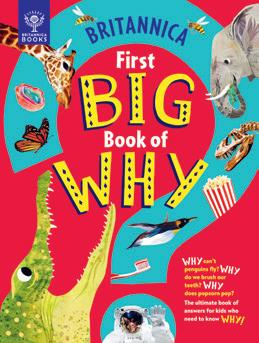


First Big Book of Why, writtenby SallySymes and Kate Drimmer,and First Big Book of How, writtenby SallySymes and Saranne Taylor,are both out now
You may not remember your dreams, but you have up to seven every night. Scientists aren’t sure why we dream. They think the brain might use dreams to tidy up all the information it has taken in during the day. Happy feelings, worries, and things we’ve seen, heard, touched, tasted and smelled get sorted. As they do, the brain makes pictures and stories out of them.
WHO KNOWS?
Dogs often give a little whimper and twitch their legs when they are having doggie dreams. Scientists think animals dream about their daily activities, but they’re not totally sure.
DID YOU KNOW?
You are more likely to remember a dream if you wake up in the middle of it.



L E T
M na y lpoep e d’no t k n wo b o n e s b y t h e i r s c i e n t i fi c n a m e s, b u t i t ’s u s e fu l an d inte rest ing t o l nrae . M r B eno s h a s s o m e
he blank ones isu n g ht e lc eu s b le ?wo D o ’n t w
ag e 34.
Nearly all mammals have 7 bones in the neck –even giraffes, who just have very long ones!
PATELLA
This is the largest sesamoid bone in the body, which is a bone embedded in a tendon or muscle. The patella is attached to the large muscle of your thigh.
RIBS These form a cage that protects many of your vital organs.
Only 3 per cent of animals on Earth arevertebrates,meaningtheyhavebackbones.
SCAPULA
This large, flat bone on the back got its name from the Latin word for ‘shovel’.
HUMERUS
Also called your funny bone, a nerve nearby gives you a zinging feeling if you hit your elbow.
CRANIUM
It goes under your hat.
CLAVICLE
VERTEBRAE
A series of small bones in a column. You may know that an animal that has this collection of bones is called a vertebrate.
The word clavicle comes from the Greek and Latin words for ‘key’, perhaps because it is a ‘fastener’ of your shoulder.
PELVIS
FEMUR
The longest bone in the human body. PHALANGES Humans have two sets of 10 of these!
The word pelvis comes from Old Latin meaning ‘basin’ or ‘bowl’. This bone forms a sort of bowl that keeps your guts from going down your legs!
Humans and other mammals share many of the same bones. The diagram below shows how the same bones of the arm and hand function in some very differently shaped structures. Even whales, in their flippers, and bats, in their wings, have the same types of bones that humans do! The human and dog skeletons on the left show even more bones we have in common with other mammals –which is most of them!
The tiniest bones in the human body are found in the ears. These three bones –called the hammer, anvil and stirrup –are found only in mammals.
As you can see from these diagrams, the bones in human and dog skeletons are the same –they’re just different sizes and slightly different shapes. Can you spot the similarities and differences between them?
There are many structures inside your body that keep you moving. Bones are connected to each other by tissues called ligaments. They keep your skeleton together. Muscles attach to bones with tissues called tendons. They help your bones move. Between some bones is a tissue called cartilage, which protects and cushions the bones as they move together. And inside your bones is a spongy tissue called marrow that produces around 500 billion blood cells every day!
Babies are born with around 300 bones. Many smaller bones fuse together as the baby grows.
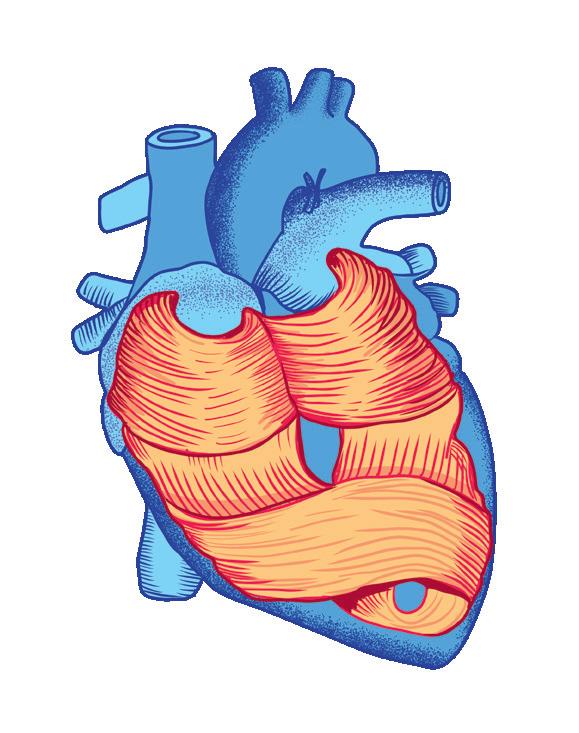


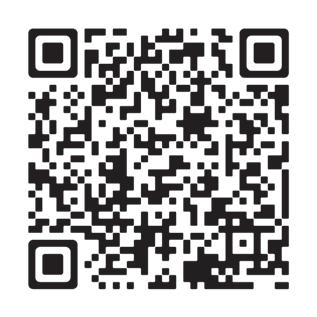
182 million
The weight in tonnes of dust from the Sahara that winds blow across the Atlantic Ocean to the Amazon.*
100
Thenumberoflitres of wateradromedary camelcan gulp in 10minutes . That’slike drinkingawhole bath in onego!

450
The frequency in hertz at which sand dunes can ‘sing’ as sand slides down their slopes.**
20
The distance in metres that a sand dune can shift in a single day.***
460
The height in metres that one of the tallest sand dunes on Earth rises in China’s Badain Jaran Desert. That’s taller than the Shard in London!
14.2 million
The area in square kilometres of the world’s biggest desert – Antarctica! That’s nearly twice the size of the Sahara!****
2,000
The age in years that the hardy Welwitschia plant, found in Africa’s Namib Desert, can live for.
80.8°C
Therecordforthe hottest ground temperature evermeasured,held bytheLutDesert in Iran The sand gets hot enoughtofryanegg !
20
The speed in miles per hour that the sidewinder rattlesnake can slither sideways across desert sand. That’s faster than most humans can run!*****
*That dust carries nutrients such as phosphorus, helping to fertilise rainforest soils thousands of kilometres away. **Scan the QR code to hear the sand sing! ***Dunes are not fixed hills. They are wind-created piles of sand that move to reshape the landscape. ****Deserts are defined by dryness (very low precipitation), not by heat. That’s why Antarctica counts as a desert. *****Sidewinders leave distinctive J-shaped tracks behind in the sand because only two parts of their body touch the ground at any time. This prevents them from overheating on the scorching desert sand.

Check out these brilliant photos sent in by brothers Jayden, 12, and Leon, 10, who live in Geneva in Switzerland. As you can see, both are talented ice hockey players who train up to four hours a day to improve their skills. Jayden started skating when he was just three and a half and now plays for the U14 Genève Future Hockey team. He loves scoring goals and
Could you get a puck past goalkeeper Leon?
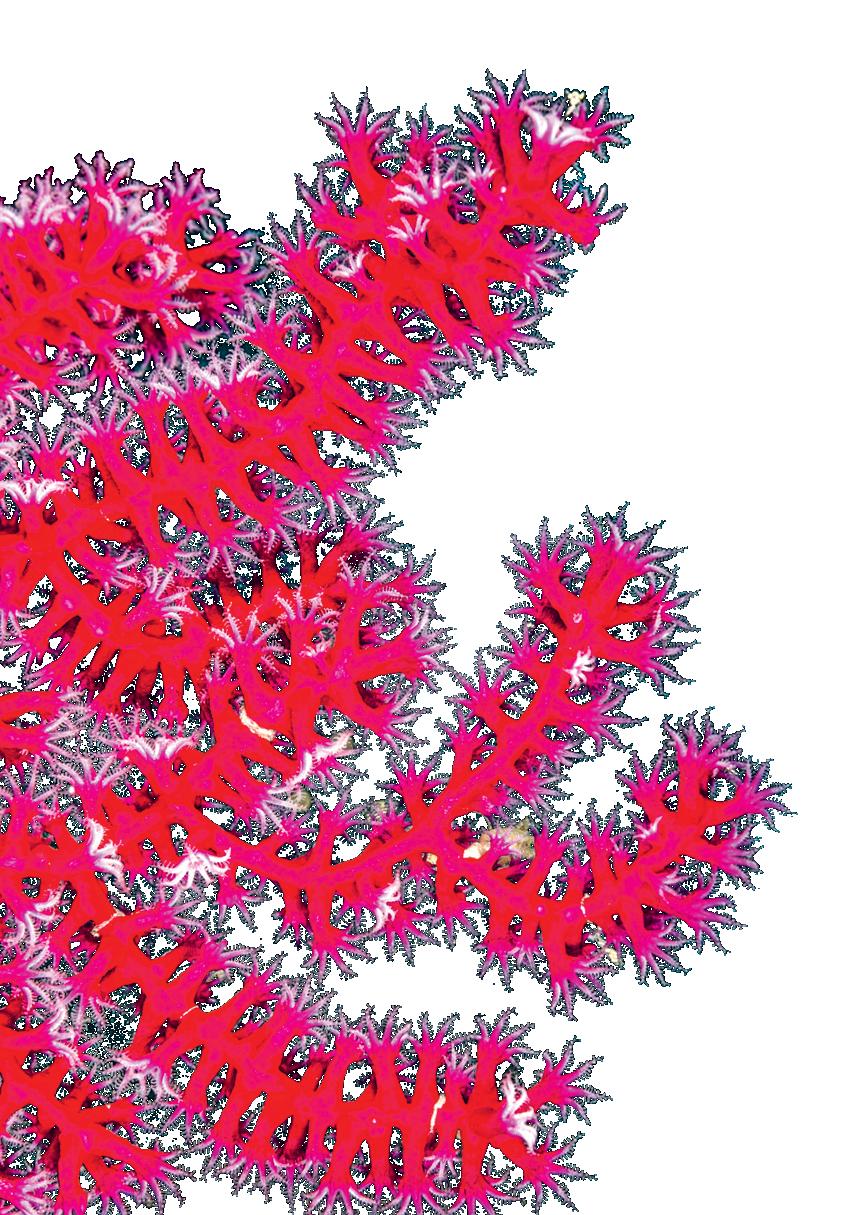
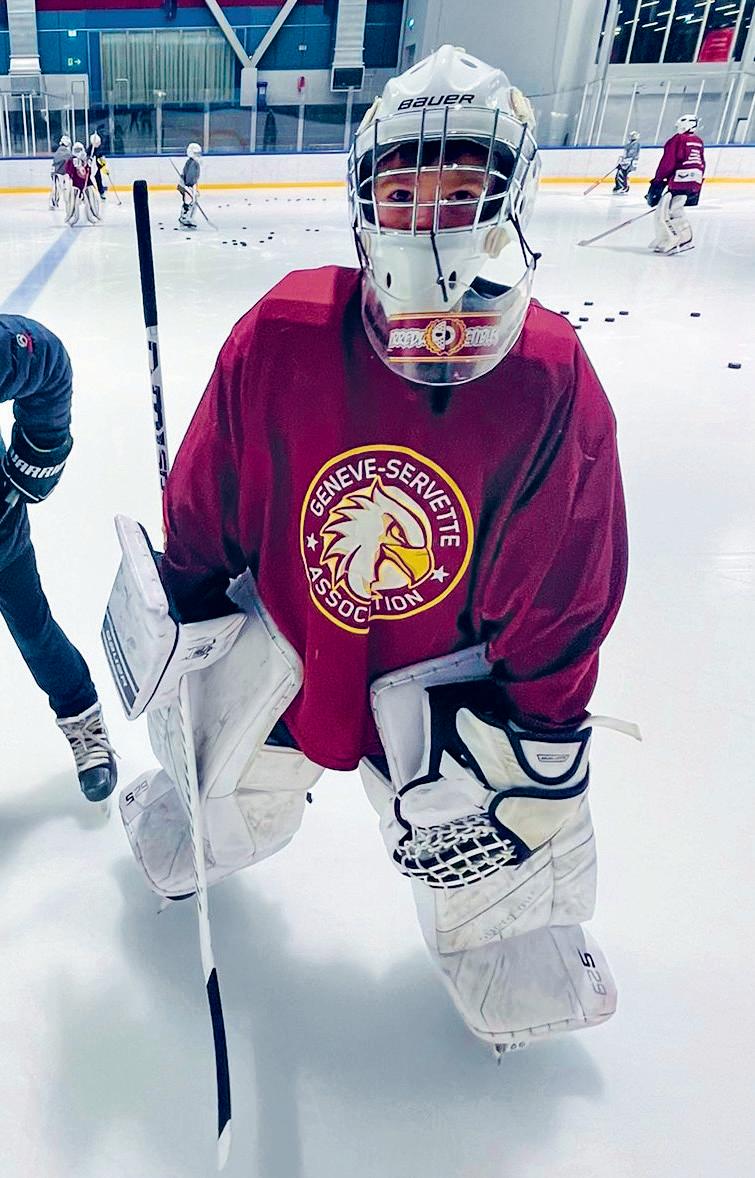

skating very, very fast! Leon started at six and is goalkeeper for the U14 Genève Servette Aiglons. Leon says he most enjoys ‘white’ matches when he doesn’t let a single puck into his goal. Switzerland has four national languages: German, French, Italian and Romansh (which is spoken by less than 1% of the population) and Jayden and Leon are fluent in French and English. ‘I love getting What on Earth! Magazine each month because of the puzzles, quizzes and jokes – and because we can read so many interesting things in English,’ says Jayden. ‘I learn so much!’ Félicitations Jayden et Leon pour vos succès au hockey sur glace!

HOW YOU CAN STAR IN A FUTURE ISSUE!
We’re always on the lookout for brilliant young readers to feature in future issues of What on Earth! Magazine. So why not send an email with something fun or creative – such as a photo, a drawing, or your favourite fact or joke? Email it to us at letters@whatonearthmag. com and you could well see your name, photo or drawing starring on these very pages!

Readers of our March issue will know that scientists are racing to save the world’s coral reefs, which are under threat from warming seas. Budding marine biologist Ewan Sweet, 11, wanted to find out more, so he visited Professor Michael Sweet (no relation) at the University of
Derby’s Aquatic Research Facility, where the team breeds corals that can better survive climate change and disease. In the wild, some corals release eggs and sperm just once a year, often at midnight. But in 2016, Professor Sweet’s team became the first to reliably trigger coral spawning in aquariums. They can also do this at any month and hour – and have bred more than
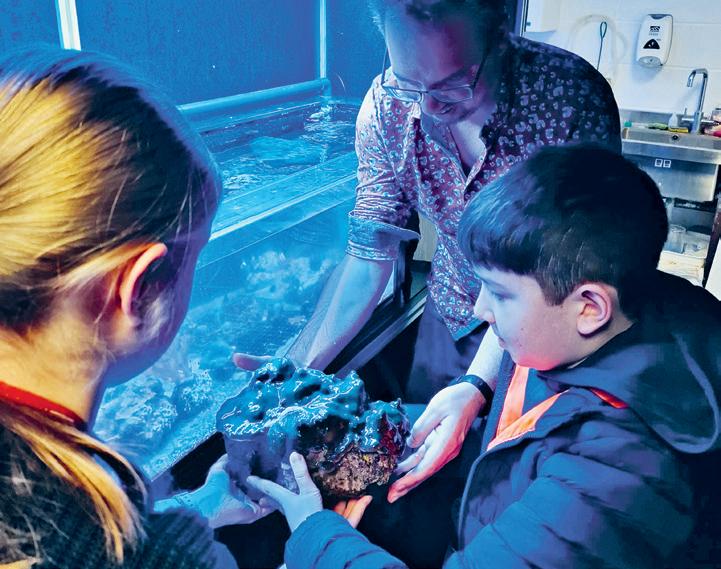
right,
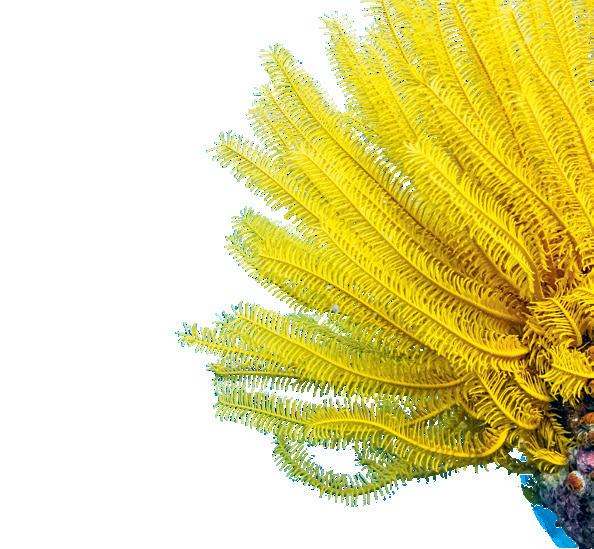
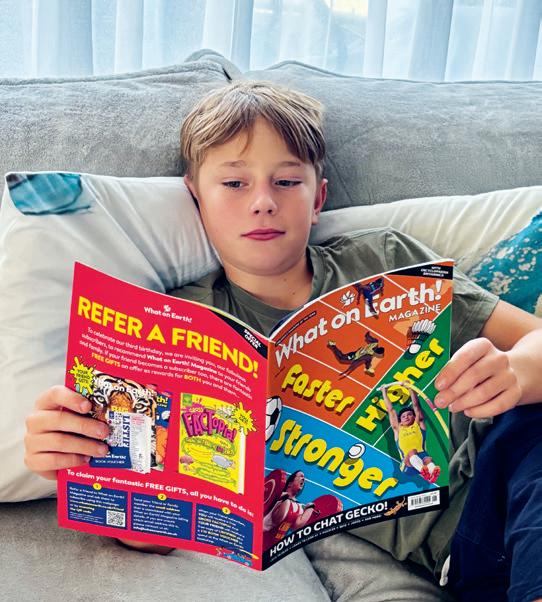
Jayden playing in a tournament in Quebec in Canada.

Luca, age 10, on holiday at Bassenthwaite Lake in Cumbria, UK.
Published by
What on Earth Magazines Ltd, The Black Barn, Wickhurst Farm, Leigh, Tonbridge, Kent, TN11 8PS
Editor-in-Chief
Andrew Pettie
Editor Alison Eldridge
Art & Design Director
Mark Hickling
Senior Designer & Illustrator
Susanna Hickling
Production
Sarah Epton
Contributors
Andy Forshaw, Andy Smith, Paige Towler, Rose Davidson, Julie Beer, Valentina D’Efilippo, Kate Hale, Conrad Quilty-Harper, Dr Nick Crumpton, Adrienne Barman, Luise Mulholland, Dan Knight, Esperanza Hickling, Sally Symes, Kate Drimmer, Saranne Taylor, May
With thanks to Andy Forshaw, Natalie Bellos, Helen Thewlis and the whole team at What on Earth Publishing
Editorial Consultant
Nancy Feresten
Business Development
David Falzani

So this is why they call it the Lake District!
45 species. ‘I found the visit really exciting,’ says Ewan. ‘I love the ocean and I want to make a difference, just like Professor Sweet.’ Who knows? Perhaps one day you will be the next scientist to find a way to save our planet’s precious corals!

CEO, What on Earth Magazines
Christopher Lloyd
For Encyclopaedia Britannica
Mary McCudden, Director, Middle School and Elementary Products
Printing and distribution
Warners Midlands PLC, The Maltings, Manor Lane, Bourne, Lincolnshire, PE10 9PH
Editorial enquiries
letters@whatonearthmag.com
Subscriptions 01778 392479 whatonearthmag.com
Picture credits Library images from: Getty Images; Shutterstock; Alamy; iStock; NASA. Eureka: Natural History Museum.
Copyright
2025 What on Earth Magazines Ltd. All rights reserved. No part of this magazine may be reproduced or transmitted in any form, including photocopying, without permission in writing from the publishers.
Brand of the Year Designer of the Year
























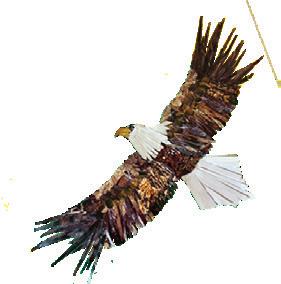
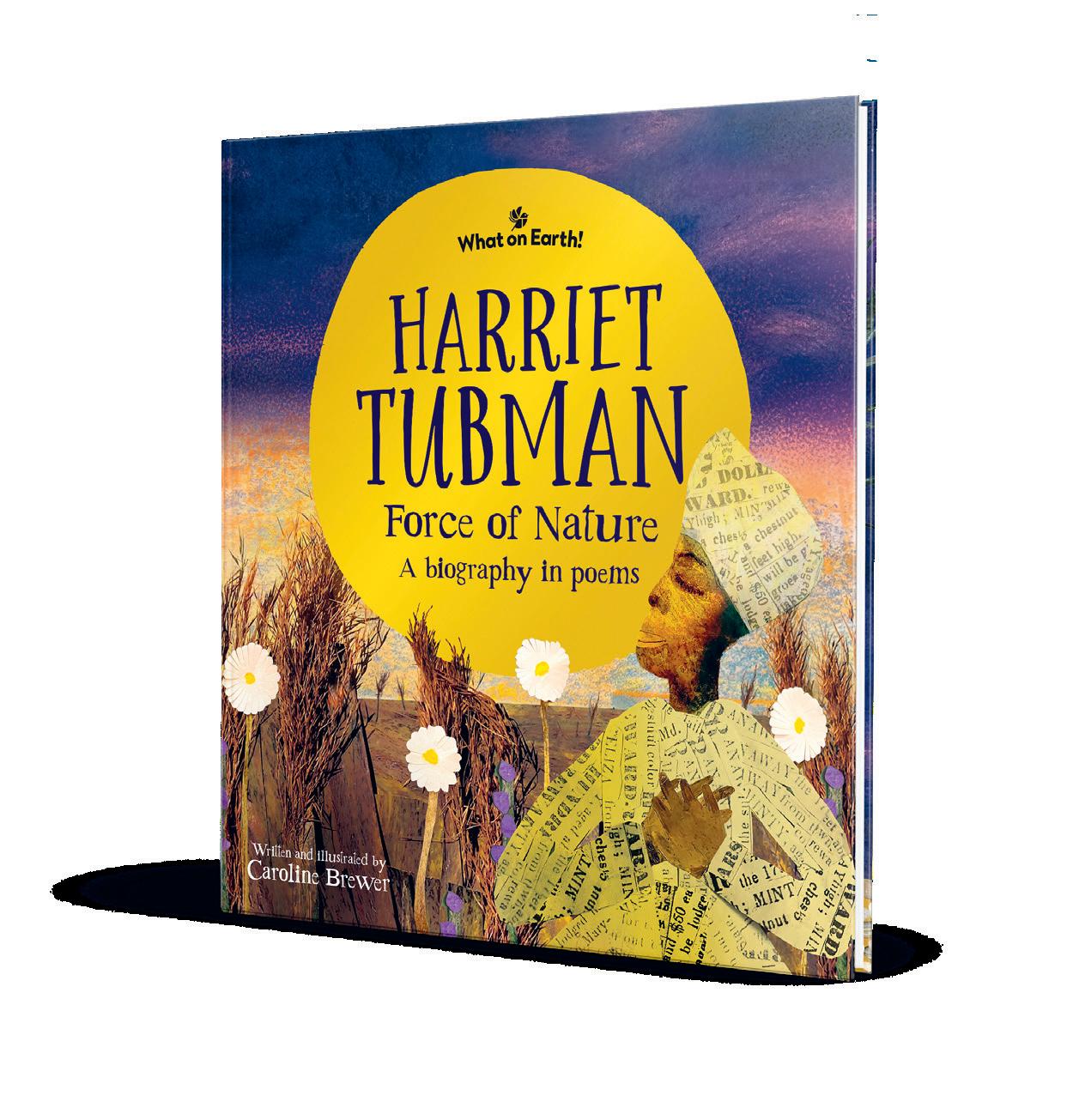










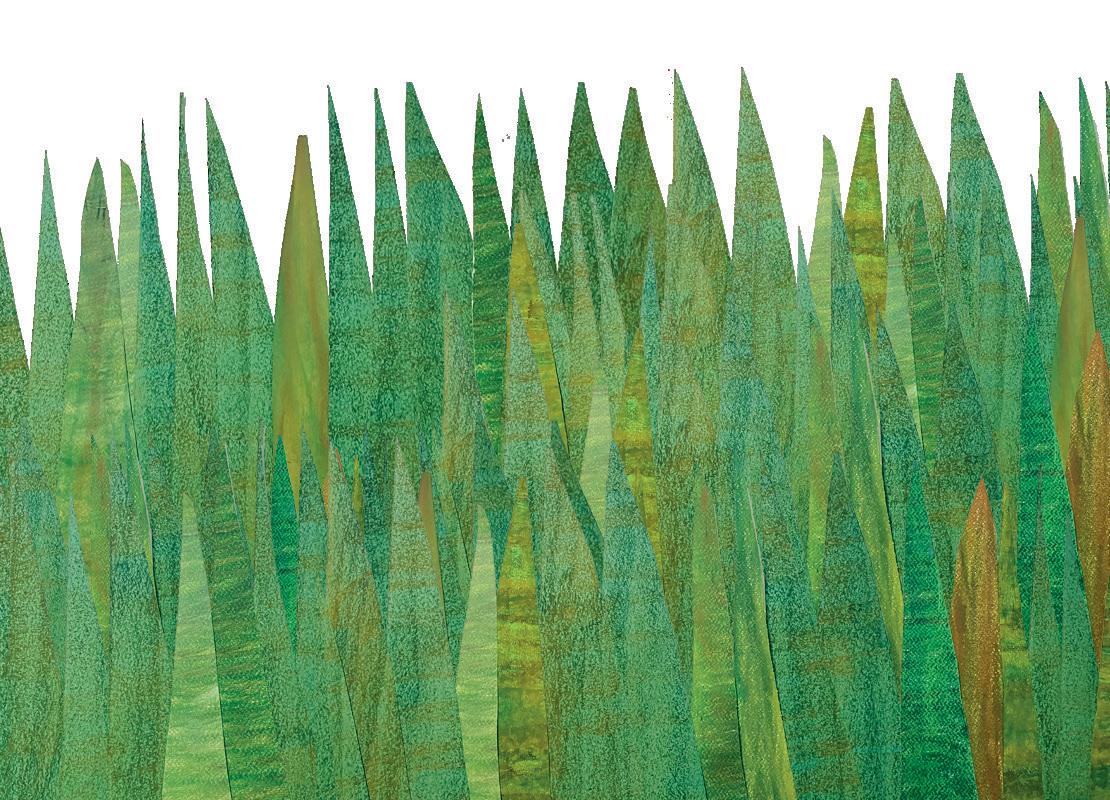











To celebrate our third birthday, we are inviting you, our fabulous subscribers, to recommend What on Earth! Magazine to your family and friends. If your friend becomes a subscriber too, you will receive two free gifts: a £10 WHAT ON EARTH BOOK VOUCHER and a copy of the brilliantly disgusting GROSS FACTOPIA!

To claim your FREE GIFTS, all you have to do is:
1 2 3
Refer a friend to What on Earth! Magazine and ask them to subscribe using this webpage: www.whatonearthmag.com/ friend or by scanning the QR code. (Please
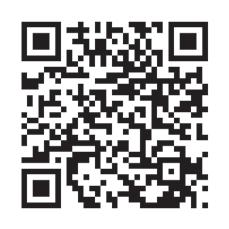
Send your friend or family member the email address that is associated with your What on Earth! Magazine billing details. If you are unsure which email address this is, please contact us at: info@whatonearthmag.com
When your friend subscribes, YOU will receive a FREE GROSS FACTOPIA! Plus a £10 BOOK VOUCHER to spend at the What on Earth! bookshop. All you have to do is tell your family and friends about your favourite magazine! YOUR FREE GIFT